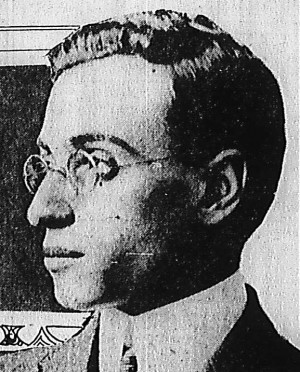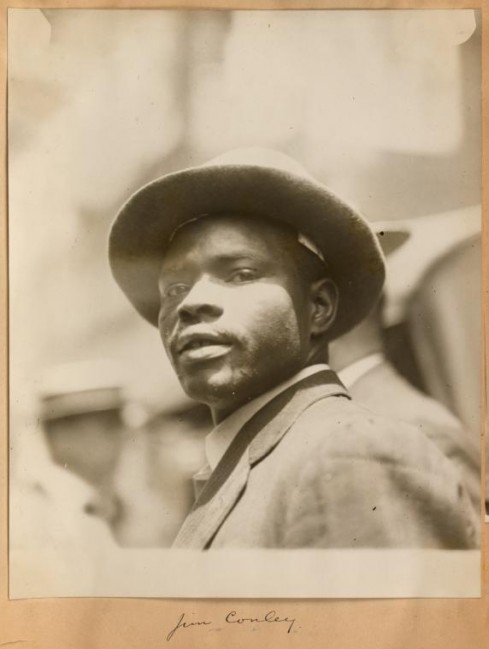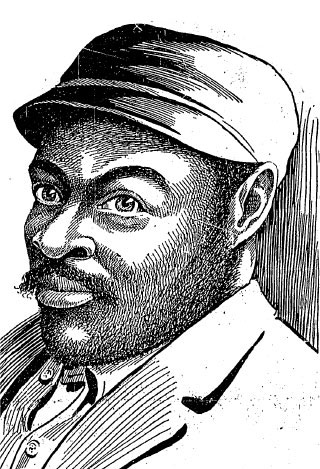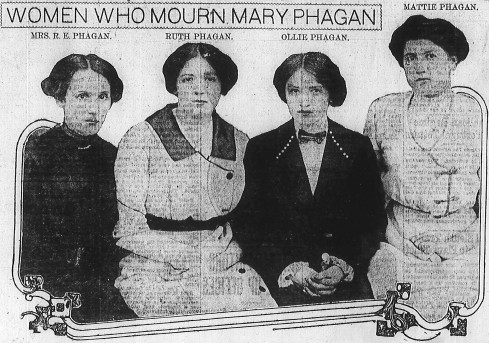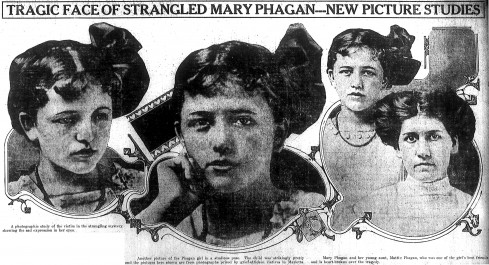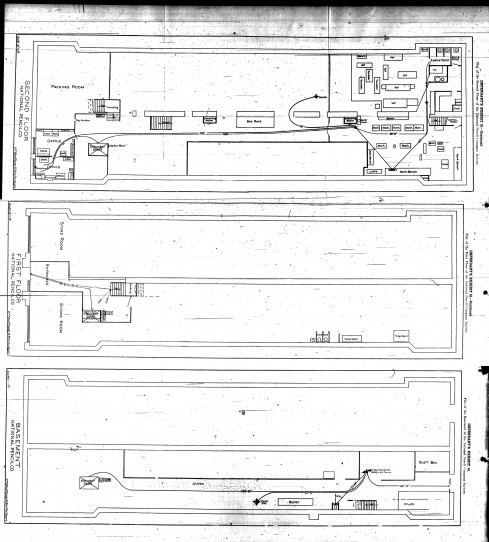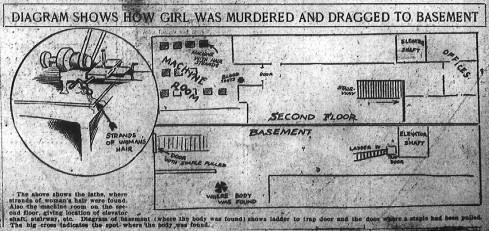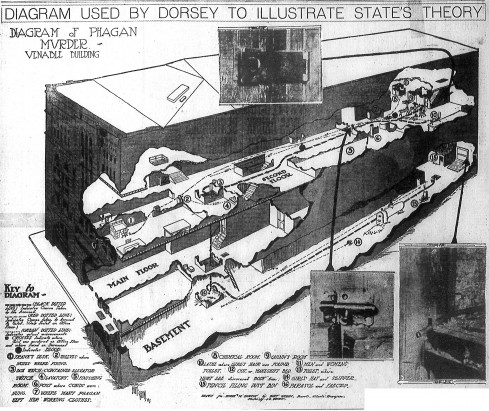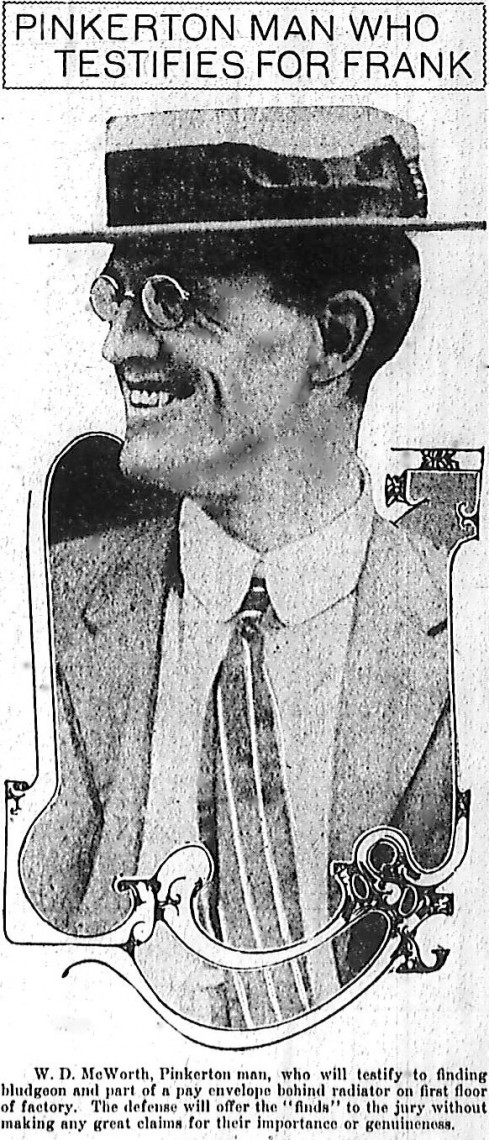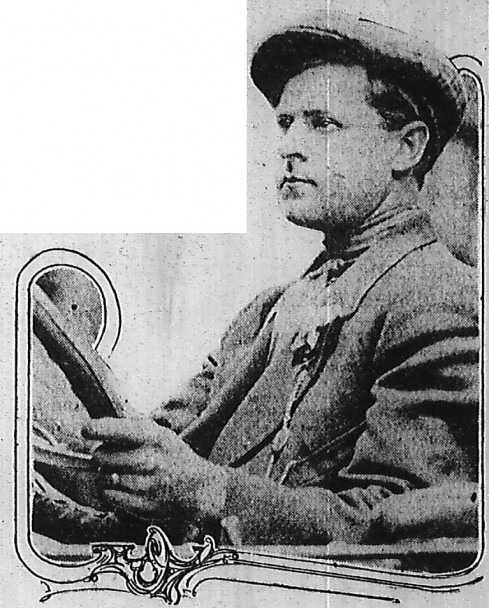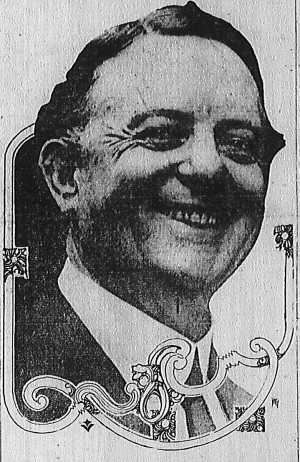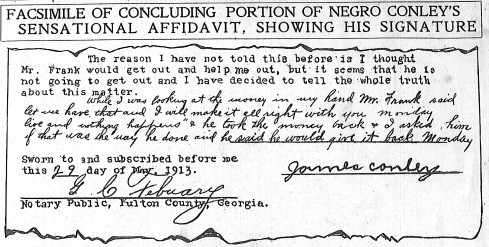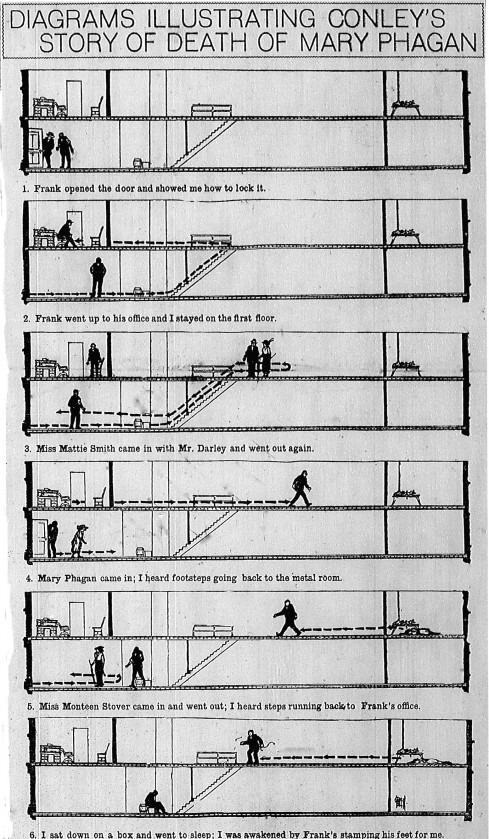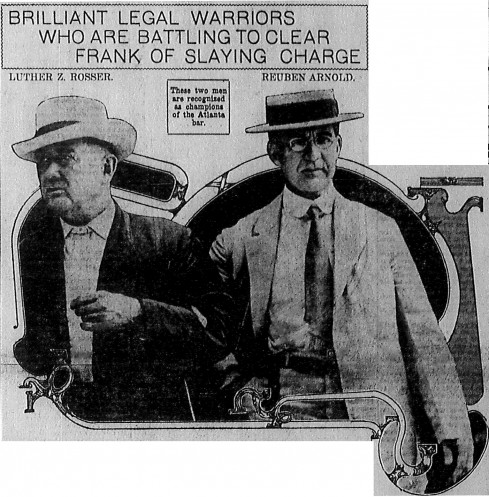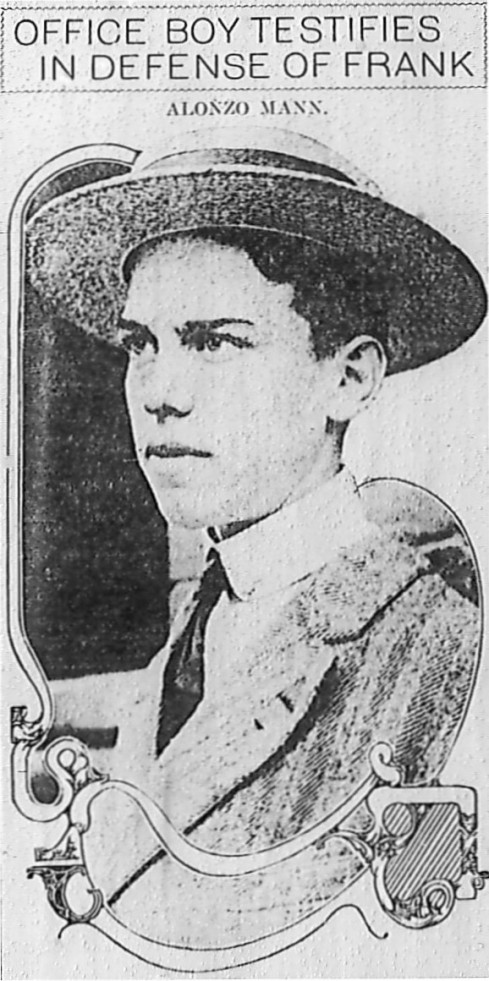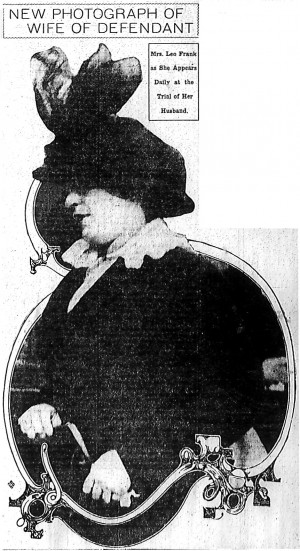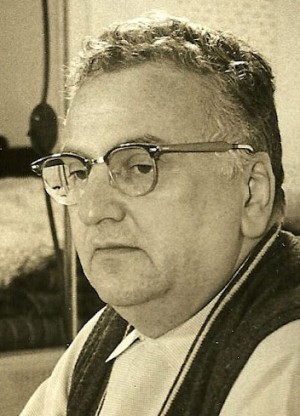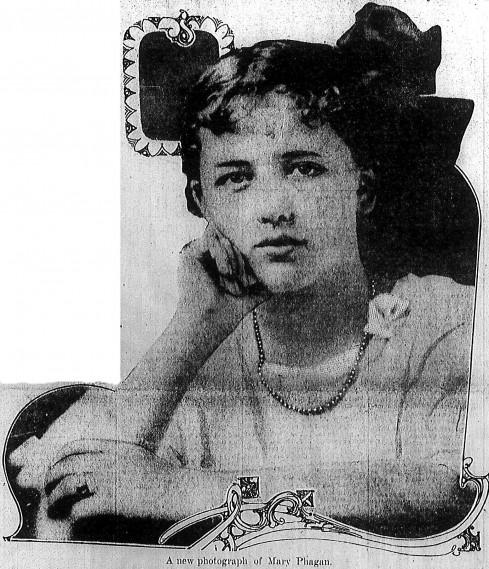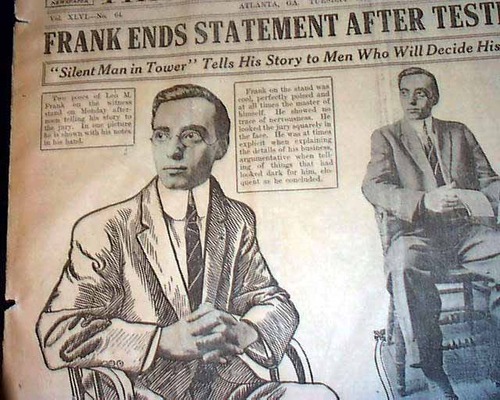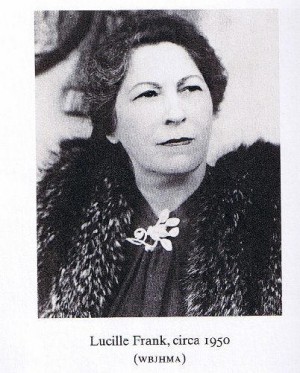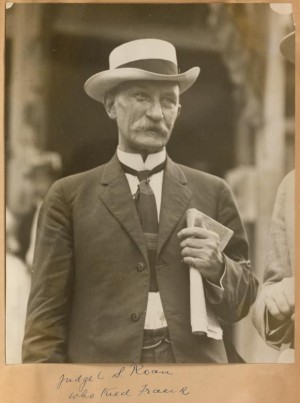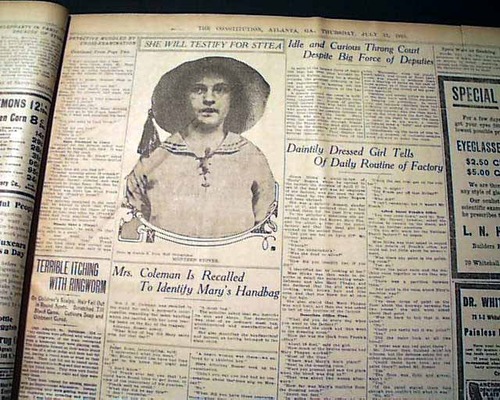
Week Two of the Leo Frank Trial:
http://theamericanmercury.org/2013/08/t ... -week-two/
[center]
[large]The Leo Frank Trial: Week Two[/large][/center]
Published by Editor on August 16, 2013
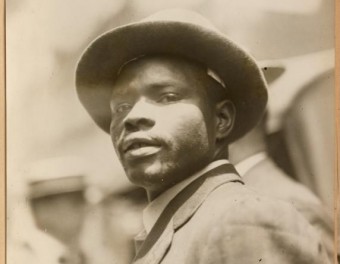
[justify]The trial of Leo Frank for the murder of Mary Phagan ended its second week 100 years ago today. Join us as we delve into the original documents of the time and learn what the jurors learned.
by Bradford L. Huie
THE EVIDENCE that National Pencil Company Superintendent Leo Frank had murdered 13-year-old child laborer Mary Phagan was mounting up as the second week of Frank?s trial began in Atlanta, and passions were high on both sides as star witness Jim Conley (pictured) took the stand.
The attempt to frame the innocent black night watchman, Newt Lee, had failed, despite 1) the ?death notes? left near the body implicating him, 2) the bloody shirt planted in his trash barrel, and 3) the forged time card supposedly showing that he had left his post for several hours the night the murder was discovered. Although no one of significance suspected Lee at this point, the defense would still try to attack the medical testimony that placed the murder near midday on April 26, and would introduce Lee?s second alleged time card, provided by Frank, purporting to show that Lee had many hours unaccounted for on the night of the 26th and the early morning hours of the 27th of April.
Newt Lee?s testimony of Frank?s peculiar behavior that afternoon and evening was compelling. Another African-American was about to become pivotal in this case: factory sweeper Jim Conley would testify that he had helped Frank by keeping watch while Frank ?chatted? with Mary alone in his office, and by assisting Frank in moving her body to the basement after she was accidentally killed. Conley was about to become central to the defense?s case, too ? they would allege that Conley was the real killer. (For background on this case,
read our introductory article, our coverage of
Week One of the trial, and my exclusive
summary of the evidence against Frank.)

Leo M. Frank: Why was he so unbelievably nervous the day of Mary Phagan?s murder, and the day after ? wringing his hands, shaking and trembling, and unable to unlock his own company?s door, operate its time clock, or operate its elevator?
As Week Two opened, the Atlanta Georgian?s James B. Nevin conceded that the case against Frank was impressive so far and that Jim Conley?s testimony ? and ability to hold up under defense insinuations and accusations ? would be crucial to the case?s outcome:
The State HAS definitely shown that Leo Frank might have murdered Mary Phagan and that he DID have the opportunity to accomplish it. Having shown that the OPPORTUNITY was there, and that the murder likely was consummated during the time limits of that opportunity, the elements of the case need but be knitted properly together to make dark the outlook for Frank?
Did Leo Frank, between 12 o?clock and the time he left the pencil factory, after paying Mary Phagan her pittance of wages, lure or follow her into the back of the second floor, there assault her and kill her? Did he then secure the services of Jim Conley to conceal the body? Or did Jim Conley, half drunk, loitering in the dark hallway below, seeing little Mary Phagan coming down the steps with her mesh bag in her hands, brooding over his lack of funds wherewith to get more whisky, find in this setup an opportunity to secure a little money ? the violent killing of the girl following?
Prior to the trial, Jim Conley had made one admission after another under the withering blast of police interrogation. He would make three statements in all, in each one admitting to more and more participation in the crime. Despite his slow, reluctant, and grudging admissions ? and the obvious contradictions among his initial affidavits ? investigators, and even some who had been doubtful about Conley?s account, were finally convinced that they had gotten the truth out of him. Police and factory officials accompanied Conley when he was brought back to the scene of the crime. Conley guided them through the factory and recounted and re-enacted the events of April 26, 1913 ? the day of the murder ? step by step as he had experienced them. The account was so minute in its details, so consistent with the known facts, so precisely matched with evidence which Conley could not possibly have known about unless he had really been there, and presented in such an open and frank manner that even skeptics were convinced by it.

Jim Conley
Let?s continue with this extremely important testimony (paragraphing and emphasis are mine):
JAMES CONLEY, sworn for the State.
I had a little conversation with Mr. Frank on Friday, the 25th of April. He wanted me to come to the pencil factory that Friday morning, that he had some work on the third floor he wanted me to do.
All right, I will talk louder. Friday evening about three o?clock Mr. Frank come to the fourth floor where I was working and said he wanted me to come to the pencil factory on Saturday morning at 8:30; that he had some work for me to do on the second floor. I have been working for the pencil company for a little over two years.
Yes, I had gone back there that way for Mr. Frank before, when he asked me to come back. I got to the pencil factory about 8:30 on April 26th. Mr. Frank and me got to the door at the same time. Mr. Frank walked on the inside and I walked behind him and he says to me, ?Good morning,? and I says, ?Good morning, Mr. Frank.? He says, ?You are a little early this morning,? and I says,? No, sir, I am not early.? He says, ?Well, you are a little early to do what I wanted you to do for me, I want you to watch for me like you have been doing the rest of the Saturdays.?
I always stayed on the first floor like I stayed the 26th of April and watched for Mr. Frank, while he and a young lady would be upon the second floor chatting, I don?t know what they were doing. He only told me they wanted to chat. When young ladies would come there, I would sit down at the first floor and watch the door for him. I couldn?t exactly tell how many times I have watched the door for him previous to April 26th, it has been several times that I watched for him.
I don?t know who would be there when I watched for him, but there would be another young man, another young lady during the time I was at the door. A lady for him and one for Mr. Frank. Mr. Frank was alone there once, that was Thanksgiving day. I watched for him. Yes, a woman came there Thanksgiving day, she was a tall, heavy built lady. I stayed down there and watched the door just as he told me the last time, April 26th.
He told me when the lady came he would stomp and let me know that was the one and for me to lock the door. Well, after the lady came and he stomped for me, I went and locked the door as he said. He told me when he got through with the lady he would whistle and for me then to go and unlock the door. That was last Thanksgiving day, 1912.
On April 26th, me and Mr. Frank met at the door. He says, ?What I want you to do is to watch for me to-day as you did other Saturdays,? and I says, ?All right.?
I said,?Mr. Frank, I want to go to the Capital City Laundry to see my mother,? and he said, ?By the time you go to the laundry and come back to Trinity Avenue, stop at the corner of Nelson and Forsyth Streets until I go to Montags.? I don?t know exactly what time I got to the corner of Nelson and Forsyth Streets, but I came there sometime between 10 and 10:30.
I saw Mr. Frank as he passed by me, I was standing on the corner, he was coming up Forsyth Street toward Nelson Street. He was going to Montag?s factory. While I was there on the corner he said, ?Ha, ha, you are here, is yer.? And I says, ?Yes, sir, I am right here, Mr. Frank.? He says, ?Well, wait until I go to Mr. Sig?s, I won?t be very long, I?ll be right back.? I says, ?All right, Mr. Frank, I?ll be right here.? I don?t know how long he stayed at Mon- tag?s. He didn?t say anything when he came back from Montag?s, but told me to come on. Mr. Frank came out Nelson Street and down Forsyth Street toward the pencil factory and I followed right behind. As we passed up there the grocery store, Albertson Brothers, a young man was up there with a paper sack getting some stuff out of a box on the sidewalk, and he had his little baby standing by the side of him, and just as Mr. Frank passed by him, I was a little behind Mr. Frank, and Mr. Frank said something to me, and by him looking back at me and saying something to me, he hit up against the man?s baby, and the man turned around and looked to see who it was, and he looked directly in my face, but I never did catch the idea what Mr. Frank said. Mr. Frank stopped at Curtis? Drug Store, corner Mitchell and Forsyth Streets, went into the soda fountain. He came out and went straight on to the factory, me right behind him.
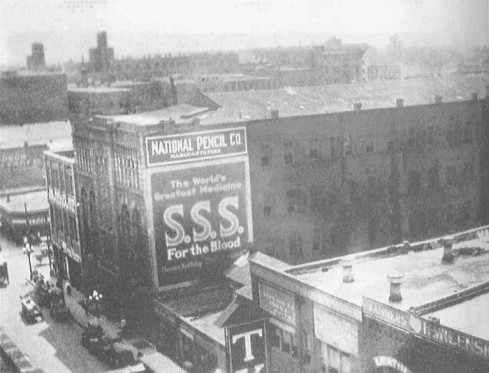
The National Pencil Company factory, 1913, where Mary Phagan met her death
When we got to the factory we both went on the inside, and Mr. Frank stopped me at the door and when he stopped me at the door he put his hand on the door and turned the door and says: ?You see, you turn the knob just like this and there can?t nobody come in from the outside,? and I says, ?All right,? and I walked back to a little box back there by the trash barrel.
He told me to push the box up against the trash barrel and sit on it, and he says. ?Now, there will be a young lady up here after awhile, and me and her are going to chat a little,? and he says, ?Now, when the lady comes, I will stomp like I did before,? and he says, ?That will be the lady, and you go and shut the door,? and I says, ?All right, sir.?
And he says, ?Now, when I whistle I will be through, so you can go and unlock the door and you come upstairs to my office then like you were going to borrow some money for me and that will give the young lady time to get out.? I says, ?All right, I will do just as you say,? and I did as he said. Mr. Frank hit me a little blow on my chest and says, ?Now, whatever you do, don?t let Mr. Darley see you.? I says, ?All right, I won?t let him see me.?
Then Mr. Frank went upstairs and he said, ?Remember to keep your eyes open,? and I says, ?All right, I will, Mr. Frank.? And I sat there on the box and that was the last I seen of Mr. Frank until up in the day sometime.
The first person I saw that morning after I got in there was Mr. Darley, he went upstairs. The next person was Miss Mattie Smith, she went on upstairs, then I saw her come down from upstairs. Miss Mattie walked to the door and stopped, and Mr. Darley comes on down to the door where Miss Mattie was, and he says,? Don?t you worry, I will see that you get that next Saturday. ? And Miss Mattie came on out and went up Alabama Street and Mr. Darley went back upstairs. Seemed like Miss Mattie was crying, she was wiping her eyes when she was standing down there. This was before I went to Nelson and Forsyth Streets.
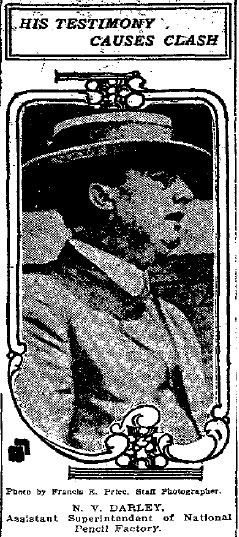
N.V. Darley, assistant superintendent under Frank
After we got back from Montag Brothers, the first person I saw come along was a lady that worked on the fourth floor, I don?t know her name. She went on up the steps. The next person that came along was the negro drayman, he went on upstairs. He was a peg-legged fellow, real dark. The next I saw [was] this negro and Mr. Holloway coming back down the steps. Mr. Holloway was putting on his glasses and had a bill in his hands, and he went out towards the wagon on the sidewalk, then Mr. Holloway came back up the steps, then after Mr. Darley came down and left, Mr. Holloway came down and left. Then this lady that worked on the fourth floor came down and left. The next person I saw coming there was Mr. Quinn. He went upstairs, stayed a little while and then came down.
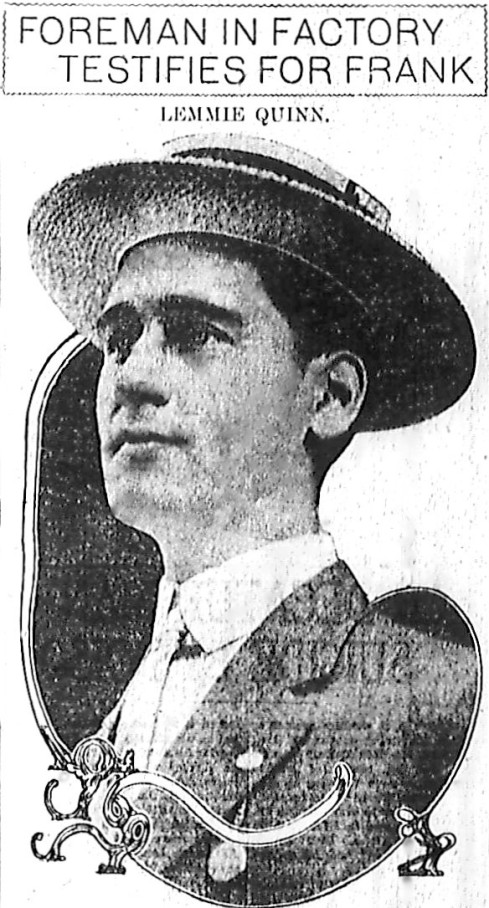
Factory foreman Lemmie Quinn
The next person that I saw was Miss Mary Perkins, that?s what I call her, this lady that is dead, I don?t know her name. After she went upstairs I heard her footsteps going towards the office and after she went in the office, I heard two people walking out of the office and going like they were coming down the steps, but they didn?t come down the steps, they went back towards the metal department.
After they went back there, I heard the lady scream, then I didn?t hear no more, and the next person I saw coming in there was Miss Monteen Stover. She had on a pair of tennis shoes and a rain coat. She stayed there a pretty good while, it wasn?t so very long either. She came back down the steps and left.
After she came back down the steps and left, I heard somebody from the metal department come running back there upstairs, on their tiptoes, then I heard somebody tiptoeing back towards the metal department. After that I kind of dozed off and went to sleep.
Next thing I knew Mr. Frank was up over my head stamping and then I went and locked the door, and sat on the box a little while, and the next thing I heard was Mr. Frank whistling. I don?t know how many minutes it was after that I heard him whistle. When I heard him whistling I went and unlocked the door just like he said, and went on up the steps.
Mr. Frank was standing up there at the top of the steps and shivering and trembling and rubbing his hands like this. He had a little rope in his hands?a long wide piece of cord. His eyes were large and they looked right funny. He looked funny out of his eyes. His face was red. Yes, he had a cord in his hands just like this here cord.
After I got up to the top of the steps, he asked me,? Did you see that little girl who passed here just a while ago?? and I told him I saw one come along there and she come back again, and then I saw another one come along there and she hasn?t come back down, and he says, ?Well, that one you say didn?t come back down, she came into my office awhile ago and wanted to know something about her work in my office and I went back there to see if the little girl?s work had come, and I wanted to be with the little girl, and she refused me, and I struck her and I guess I struck her too hard and she fell and hit her head against something, and I don?t know how bad she got hurt. Of course you know I ain?t built like other men.?
The reason he said that was, I had seen him in a position I haven?t seen any other man that has got children. I have seen him in the office two or three times be- fore Thanksgiving and a lady was in his office, and she was sitting down in a chair (and she had her clothes up to here, and he was down on his knees, and she had her hands on Mr. Frank. I have seen him another time there in the packing room with a young lady lying on the table, she was on the edge of the table when I saw her).
He asked me if I wouldn?t go back there and bring her up so that he could put her somewhere, and he said to hurry, that there would be money in it for me.
When I came back there, I found the lady lying flat of her back with a rope around her neck. The cloth was also tied around her neck and part of it was under her head like to catch blood. I noticed the clock after I went back there and found the lady was dead and came back and told him. The clock was four minutes to one.
She was dead when I went back there and I came back and told Mr. Frank the girl was dead and he said ?Sh-Sh!? He told me to go back there by the cotton box, get a piece of cloth, put it around her and bring her up. I didn?t hear what Mr. Frank said, and I came on up there to hear what he said. He was standing on the top of the steps, like he was going down the steps, and while I was back in the metal department I didn?t understand what he said, and I came on back there to understand what he did say, and he said to go and get a piece of cloth to put around her, and I went and looked around the cotton box and got a piece of cloth and went back there.
The girl was lying flat on her back and her hands were out this way. I put both of her hands down easily, and rolled her up in the cloth and taken the cloth and tied her up, and started to pick up her, and I looked back a little distance and saw her hat and a piece of ribbon laying down and her slippers and I taken them and put them all in the cloth and I ran my right arm through the cloth and tried to bring it up on my shoulder.
The cloth was tied just like a person that was going to give out clothes on Monday, they get the clothes and put them on the inside of a sheet and take each corner and tie the four corners together, and I run my right arm through the cloth after I tied it that way and went to put it on my shoulder, and I found I couldn?t get it on my shoulder, it was heavy and I carried it on my arm the best I could, and when I got away from the little dressing room that was in the metal department, I let her fall, and I was scared and I kind of jumped, and I said, ?Mr. Frank, you will have to help me with this girl, she is heavy,? and he come and caught her by the feet and I laid hold of her by the shoulders, and when we got her that way I was backing and Mr. Frank had her by the feet, and Mr. Frank kind of put her on me, he was nervous and trembling, and after we got up a piece from where we got her at, he let her feet drop and then he picked her up and we went on to the elevator, and he pulled down on one of the cords and the elevator wouldn?t go, and he said, ?Wait, let me go in the office and get the key,? and he went in the office and got the key and come back and unlocked the switchboard and the elevator went down to the basement, and we carried her out and I opened the cloth and rolled her out there on the floor, and Mr. Frank turned around and went on up the ladder, and I noticed her hat and slipper and piece of ribbon and I said, ?Mr. Frank, what am I going to do with these things?? and he said, ?Just leave them right there,? and I taken the things and pitches them over in front of the boiler, and after Mr. Frank had left I goes on over to the elevator and he said, ?Come on up and I will catch you on the first, floor,? and I got on the elevator and started it to the first floor, and Mr. Frank was running up there.
He didn?t give me time to stop the elevator, he was so nervous and trembly, and before the elevator got to the top of the first floor Mr. Frank made the first step onto the elevator and by the elevator being a little down like that, he stepped down on it and hit me quite a blow right over about my chest and that jammed me up against the elevator and when we got near the second floor he tried to step off before it got to the floor and his foot caught on the second floor as he was stepping off and that made him stumble and he fell back sort of against me, and he goes on and takes the keys back to his office and leaves the box unlocked.
I followed him into his private office and I sat down and he commenced to rubbing his hands and began to rub back his hair and after awhile he got up and said, ?Jim,? and I didn?t say nothing, and all at once he happened to look out of the door and there was somebody coming, and he said, ?My God, here is Emma Clarke and Corinthia Hall,? and he said ?Come over here Jim, I have got to put you in this wardrobe,? and he put me in this wardrobe, and I stayed there a good while and they come in there and I heard them go out, and Mr. Frank come there and said, ?You are in a tight place,? and I said ?Yes,? and he said ?You done very well.?
So after they went out and he had stepped in the hall and had come back he let me out of the wardrobe, and he said ?You sit down,? and I went and sat down, and Mr. Frank sat down. But the chair he had was too little for him or too big for him or it wasn?t far enough back or something.
He reached on the table to get a box of cigarettes and a box of matches, and he takes a cigarette and a match and hands me the box of cigarettes and I lit one and went to smoking and I handed him back the box of cigarettes, and he put it back in his pocket and then he took them out again and said, ?You can have these,? and I put them in my pocket, and then he said, ?Can you write ?? and I said, ?Yes, sir, a little bit,? and he taken his pencil to fix up some notes.
I was willing to do anything to help Mr. Frank because he was a white man and my superintendent, and he sat down and I sat down at the table and Mr. Frank dictated the notes to me. Whatever it was it didn?t seem to suit him, and he told me to turn over and write again, and I turned the paper and wrote again, and when I done that he told me to turn over again and I turned over again and wrote on the next page there, and he looked at that and kind of liked it and he said that was all right.
Then he reached over and got another piece of paper, a green piece, and told me what to write. He took it and laid it on his desk and looked at me smiling and rubbing his hands, and then he pulled out a nice little roll of greenbacks, and he said, ?Here is $200,? and I taken the money and looked at it a little bit and I said, ?Mr. Frank, don?t you pay another dollar for that watch man, because I will pay him myself,? and he said, ?All right, I don?t see what you want to buy a watch for either, that big fat wife of mine wanted me to buy an automobile and I wouldn?t do it.?
And after awhile Mr. Frank looked at me and said, ?You go down there in the basement and you take a lot of trash and burn that package that?s in front of the furnace,? and I told him all right. But I was afraid to go down there by myself, and Mr. Frank wouldn?t go down there with me. He said, ?There?s no need of my going down there,? and I said, ?Mr. Frank, you are a white man and you done it, and I am not going down there and burn that myself.?
He looked at me then kind of frightened and he said ?Let me see that money? and he took the money back and put it back in his pocket, and I said, ?Is this the way you do things?? and he said, ?You keep your mouth shut, that is all right.?
And Mr. Frank turned around in his chair and looked at the money and he looked back at me and folded his hands and looked up and said, ?Why should I hang? I have wealthy people in Brooklyn,? and he looked down when he said that, and I looked up at him, and he was looking up at the ceiling, and I said,? Mr. Frank what about me?? and he said, ? That?s all right, don?t you worry about this thing, you just come back to work Monday like you don?t know anything, and keep your mouth shut, if you get caught I will get you out on bond and send you away,? and he said, ?Can you come back this evening and do it?? and I said ?Yes, that I was coming to get my money.?
He said, ?Well, I am going home to get dinner and you come back here in about forty minutes and I will fix the money,? and I said, ?How will I get in?? and he said, ?There will be a place for you to get in all right, but if you are not coming back let me know, and I will take those things and put them down with the body,? and I said, ?All right, I will be back in about forty minutes.?
Then I went down over to the beer saloon across the street and I took the cigarettes out of the box and there was some money in there and I took that out and there was two paper dollar bills in there and two silver quarters and I took a drink, and then I bought me a double header and drank it and I looked around at another colored fellow standing there and I asked him did he want a glass of beer and he said ?No,? and I looked at the clock and it said twenty minutes to two and the man in there asked me was I going home, and I said, ?Yes,? and I walked south on Forsyth Street to Mitchell and Mitchell to Davis, and I said to the fellow that was with me ?I am going back to Peters Street,? and a Jew across the street that I owed a dime to called me and asked me about it and I paid him that dime.
Then I went on over to Peters Street and stayed there awhile. Then I went home and I taken fifteen cents out of my pocket and gave a little girl a nickel to go and get some sausage and then I gave her a dime to go and get some wood, and she stayed so long that when she came back I said, ?I will cook this sausage and eat it and go back to Mr. Frank?s,? and I laid down across the bed and went to sleep, and I didn?t get up no more until half past six o?clock that night, that?s the last I saw of Mr. Frank that Saturday.
I saw him next time on Tuesday on the fourth floor when I was sweeping. He walked up and he said, ?Now remember, keep your mouth shut,? and I said, ?All right,? and he said, ?If you?d come back on Saturday and done what I told you to do with it down there, there wouldn?t have been no trouble.? This conversation took place between ten and eleven o?clock Tuesday.
Mr. Frank knew I could write a little bit, because he always gave me tablets up there at the office so I could write down what kind of boxes we had and I would give that to Mr. Frank down at his office and that?s the way he knew I could write.
I was arrested on Thursday, May 1st.
Mr. Frank told me just what to write on those notes there. That is the same pad he told me to write on (State?s Exhibit A). The girl?s body was lying somewhere along there about No. 9 on that picture (State?s Exhibit A). I dropped her somewhere along No. 7. We got on [the] elevator on the second floor. The box that Mr. Frank unlocked was right around here on side of elevator.
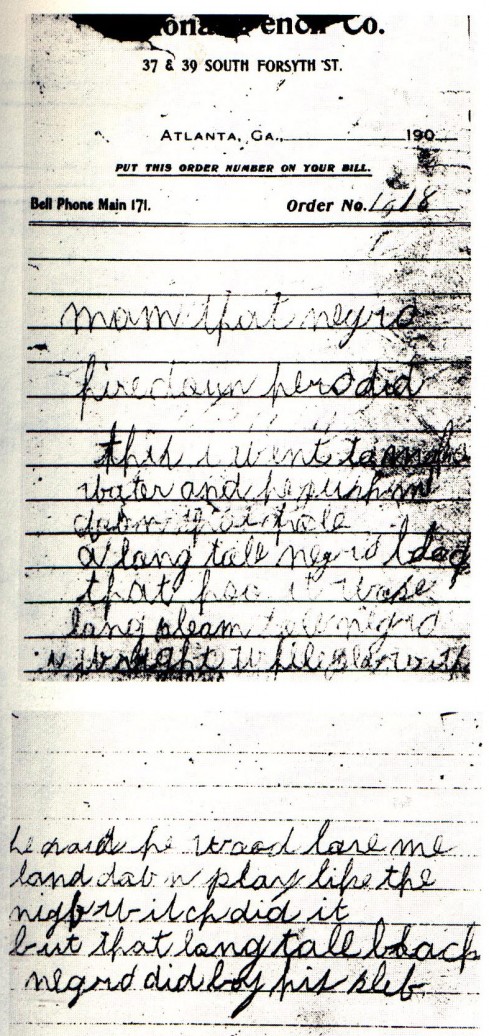
The death notes found near Mary Phagan?s body ? click for high resolution
He told me to come back in about forty minutes to do that burning. Mr. Frank went in the office and got the key to unlock the elevator. The notes were fixed up in Mr. Frank?s private office. I never did know what became of the notes.
I left home that morning about 7 or 7:30. I noticed the clock when I went from the factory to go to Nelson and Forsyth Streets, the clock was in a beer saloon on the corner of Mitchell Street. It said 9 minutes after 10. I don?t know the name of the woman who was with Mr. Frank on Thanksgiving day. I know the man?s name was Mr. Dalton. When I saw Mr. Frank coming towards the factory Saturday morning he had on his raincoat and his usual suit of clothes and an um- brella. Up to Christmas I used to run the elevator, then they put me on the fourth floor to clean up. I cleaned up twice a week on the first floor under Mr. Holloway?s directions.
The lady I saw in Mr. Frank?s office Thanksgiving day was a tall built lady, heavy weight, she was nice looking, and she had on a blue looking dress with white dots in it and a grayish looking coat with kind of tails to it. The coat was open like that and she had on white slippers and stockings. On Thanksgiving day Mr. Frank told me to come to his office. I have never seen any cot or bed down in the basement. I refused to write for the police the first time. I told them I couldn?t write.
CROSS EXAMINATION.
I am 27 years old. The last job I had was working for Dr. Palmer. I worked for him a year and a half. I worked before that for Orr Stationery Company for three or four months. Before that I worked for S.S. Gordon. Before that I worked for Adams Woodward and Dr. Honeywell. Got my first job eleven years ago with Mr. S.M. Truitt. Next job was with W.S. Coates. I can?t spell his name.
I can?t read and write good. I can?t read the newspapers good. No, sir; I don?t read the news- paper. I never do, I have tried, I found I couldn?t and I quit. I can?t read a paper right through. I can?t go right straight down through the page, and that?s the reason I don?t read newspapers, I can?t get any sense out of them. There is some little letters like? dis? and? dat? that I can read. The other things I don?t understand. No, I can?t spell ?dis? and ?dat.? Yes, I can spell ?school,? and I can?t spell ?collar,? I can spell ?shirts.? I can spell ?shoes,? and ?hat.? I spell ?cat? with a ?k.? I can spell ?dog,? and most simple little words like that. I don?t know about spelling ?mother.? I can spell ?papa.? I spell it p-a-p-a. I can?t spell ??father ? or ??jury? or ?judge? or ?stockings.? I never did go to school further than the first grade. I went to school about a year. I can spell? day,? but not ?daylight,? I can spell ?beer? but not ?whiskey.? I couldn?t read the name ?whiskey.? No, I can?t read any letter on that picture there (Exhibit A, State).
I can?t figure except with my fingers. I know the figures as far as eight, as far as twelve. I knows more about counting than I do about figuring. I don?t know what year it was I went to school. I worked for Truitt about two years, for Mr. Coates five years, for Mr. Woodward and Mr. Honeywell about a year and a pressing club about two years, Orr Stationery Company three or four months, Dr. Palmer about a year and a half, and then I went to work for the pencil factory.
Mr. Herbert Schiff employed me at the pencil factory. Sometimes Mr. Schiff paid me off, sometimes Mr. Gantt, sometimes Mr. Frank. I don?t remember when I saw Mr. Frank pay me off or how many times. I drawed my money very seldom.
I would always have somebody else draw it for me. I told Mr. Holloway to let Gordon Bailey draw my money mostly. He?s the one they call ?Snowball.? The reason why I didn?t draw it myself I would be owing some of the boys around the factory and I didn?t have it to pay, and I would leave the factory about half past eleven so that I didn?t have to pay it, and then I would have Snowball draw my money for me mostly. I would see him afterwards and he would give me the money. Sometimes I would go down through the basement out the back way to keep away from them.
The reason I let them draw my money I owed some of them, and some of them owed me and I wanted them to pay me first before I paid them. I didn?t want to get my money on the inside because I didn?t want them to see such a little I was drawing to what they were drawing. I wasn?t drawing but $6.05. Snowball was drawing $6.05. As to who it was I didn?t want to see what I was drawing, there was one named Walter Pride; he?s been there five years. He said he drew $12.00 a week. Then there was Joe Pride, he told me he drew $8.40 a week. They were down in the basement and asked me how much I was drawing. I told them it wasn?t none of their business. Then there was a fellow named Fred. I don?t know how much he drew. The next one was the fireman. I don?t know how much he drew. There were two or three others, but I didn?t have no talk with them. I was just hiding what I drew from Walter Pride. As to whether I couldn?t draw my money after Walter drew his without his knowing it, well he would always be down there waiting for me. As to whether I couldn?t get my money without his being behind me and seeing what I got, he could see if I tore open the envelope. I had to open it to pay them with. That?s the reason I didn?t go and draw my money. I know I could have put it in my pocket, but I couldn?t tear it open unless I took it out. Yes, the reason I didn?t draw my money was because I didn?t want to pay them. That?s the reason I let Snowball draw my money. They could have slipped up behind me and looked. As to whether I couldn?t walk off and keep them from seeing it, if I didn?t tear it open, then they would keep up with me until I did. He would follow me around.
No, I wasn?t trying to keep out of paying them. As to what I was trying to do, if they paid me then I would pay them. The way I liked to settle with them, I liked to take them to the beer saloon and buy twice as much as they get. If I was there when they come in on me, I would say, ?I owe you, let?s drink it up.? Yes, I would get out of it if I could, but if they saw me walk up and pay them that way. I paid Walter Pride sometimes that way and sometimes the other way. I would say, ?I owe you fifteen cents, I buy three beers, and you owe me fifteen cents, and that be three beers.? I say if I would be in the beer saloon when they come in there, I would do that, but if I could get out before they saw me, I would be gone.
I never did know what time the watchman come there on Saturday, or any Saturday. I never have seen the night watchman in the factory. I have seen young Mr. Kendrick come and get his money. He always comes somewhere about two o?clock to get his money. I have seen him lots of times Saturday and get his money. He always got it from Mr. Frank at two o?clock.
No, I didn?t know Newt Lee. I heard them say there was a negro night watchman, but I never did know that he was a negro. I knew they paid employees off at twelve o?clock. I don?t know what time the night watchman would come there to work. Mr. Holloway stays until 2:30.
I couldn?t tell the first time I ever watched for Mr. Frank. Sometimes during the last summer, somewhere just about in July. As to what he said to get me to watch for him that was on a Saturday, I would be there sweeping and Mr. Frank come out and called me in his office. I always worked until half past four in the evening. I would leave about half past twelve, ring out and come back about half past one or two. Sometimes I would ring in when I came back and sometimes I wouldn?t. I ringed in every morning when I came. I never did ring in much. I would do it after they got after me about it. It was my habit not to do it. As to how they would know how much to pay me if I didn?t ring in, I knew they paid me $1.10 a day, all the time. No, they didn?t pay me by the clock punches, they paid me by the day, they paid me 11 c. an hour. Sometimes I would punch the clock when I got there; that was my duty.
Sometimes I was paid when I didn?t work, I don?t know how that happened, but Mr. Frank would come and tell me I didn?t take out that money for the time you lost last week. I don?t know on what date he ever did that on. Yes, I always got my money in envelopes. As to how they would know how much to put in the envelope, when I didn?t punch, they would come and ask if I was here every time I didn?t ring in, and they would ask Mr. Holloway if I was here. If the clock didn?t show any punch, they would ask me if I was here at that hour. No they wouldn?t ask how many hours I was here, they would just ask if I was here a certain hour and then they would pay me for the full day, whether I punched the clock or not, just so I punched it in the morning.
The lady that was with Mr. Frank the time I watched for him sometime last July was Miss Daisy Hopkins. It would always be somewhere between 3 and 3:30. I was sweeping on the second floor. Mr. Frank called me in his office. There was a lady in there with him. That was Miss Daisy Hopkins. She was present when he talked to me. He said ?You go down there and see nobody don?t come up and you will have a chance to make some money.?
The other lady had gone out to get that young man, Mr. Dalton. I don?t know how long she had been gone. She came back after a while with Mr. Dalton. They came upstairs to Mr. Frank?s office, stayed there ten or fifteen minutes. They came back down, they didn?t go out and she says, ?All right, James.? About an hour after that Mr. Frank came down. This lady and man after she said ?All right, James? went down through the trap door into the basement. There?s a place on the first floor that leads into another department and there?s a trap door in there and a stairway that leads down in the basement, and they pull out that trap door and go down in the basement. I opened the trap door for them. The reason I opened the trap door because she said she was ready, I knew where she was going because Mr. Frank told me to watch, he told me where they were going.
I don?t know how long they stayed down there. I don?t know when they came back. I watched the door all the time. Mr. Dalton gave me a quarter and went out laughing and the lady went up the steps. Then the ladies came down and left, and then Mr. Frank came down after they left. That was about half past four. He gave me a quarter and I left and then he left.
The next Saturday I watched was right near the same thing. It was about the last of July or the first of August. The next Saturday I watched for him about twelve o?clock he said ?You know what you done for me last Saturday, I want to put you wise for this Saturday.? I said, ?All right, what time ?? He said, ?Oh, about half past.?
After Mr. Holloway left, Miss Daisy Hopkins came on in into the office, Mr. Frank came out of the office, popped his fingers, bowed his head and went back into the office. I was standing there by the clock. Yes, he popped his fingers and bowed to me, and then I went down and stood by the door. He stayed there that time about half an hour and then the girl went out. He gave me half a dollar this time.
The next time I watched for him and Mr. Dalton too, somewhere along in the winter time, before Thanksgiving Day, somewhere about the last part of August. Yes, that?s somewhere near the winter. This time he spoke to me on the fourth floor in the morning. Gordon Bailey was standing there when he spoke to me. He said, ?I want to put you wise again for to-day.?
The lady that came in that day was one who worked on the fourth floor; it was not Miss Daisy Hopkins. A nice looking lady, kind of slim. She had hair like Mr. Hooper?s. She had a green suit of clothes on. When Miss Daisy Hopkins came she had on a black skirt and white waist the first time. I don?t know the name of that lady that works on the fourth floor. Yes, I have seen her lots of times at the factory, but I don?t know her name. She went right to Mr. Frank?s office, then I went and watched. She stayed about half an hour and come out. Mr. Frank went out of the factory and then came back.
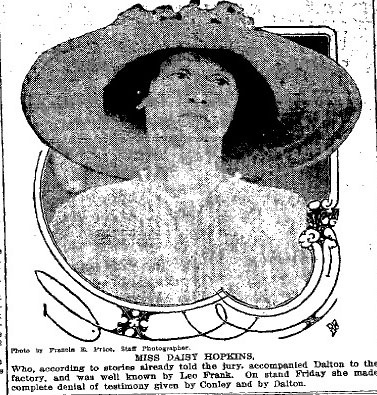
Daisy Hopkins; she denied going to the pencil factory for immoral purposes, where Jim Conley said he saw her
I stayed there and waited for him. He said, ?I didn?t take out that money.? I said, ?Yes, I seed you didn?t.? He said ?That?s all right, old boy, I don?t want you to say anything to Mr. Herbert or Mr. Darley about what?s going on around here.?
Next time I watched for him was Thanksgiving Day. I met Mr. Frank that morning about eight o?clock. He said ?A lady will be in here in a little while, me and her are going to chat, I don?t want you to do no work, I just want you to watch.?
In about half an hour the lady came. I didn?t know that lady, she didn?t work at the factory. I think I saw her in the factory two or three nights before Thanksgiving Day in Mr. Frank?s office. She was a nice looking lady. I think she had on black clothes. She was very tall, heavy built lady. After she came in that Thanksgiving Day morning, I closed the door after he stamped for me to close it. She went upstairs towards Mr. Frank?s office. Mr. Frank came out there and stamped, and I closed the door. Mr. Frank said, ?I?ll stamp after this lady comes and you go and close the door and turn the night latch.? That?s the first time he told me about the night lock. And he says, ?If everything is all right you kick against the door,? and I kicked against the door. After an hour and a half Mr. Frank came down and unlocked the doors and says, ?Everything is all right.? He then went and looked up the street and told the lady to come on downstairs. After she came down, she said to Mr. Frank, ?Is that the nigger ?? and Mr. Frank said, ?Yes,? and she said, ?Well, does he talk much ?? and he says, ?No, he is the best nigger I have ever seen.? Mr. Frank called me in the office and gave me $1.25.
The lady had on a blue skirt with white dots in it and white slippers and white stockings and had a gray tailor-made coat, with pieces of velvet on the edges of it. The velvet was black and the cloth of the coat was gray. She had on a black hat with big black feathers.
I left a little before 12 o?clock. I didn?t see anybody else there that day at the office.
The next time I watched was way after Christmas, on a Saturday about the middle of January?somewhere about the first or middle. It was right after New Year, one or two, or three or four days after. It was on a Saturday. He said a young man and two ladies would be coming. That was that Saturday morning at half past seven. I was standing by the side of Gordon Bailey when he come and told me, and he said I could make a piece of money off that man. Yes, Snowball could hear what he said.
The man and ladies came about half past two or three o?clock. They stayed there about two hours. I didn?t know either one of the ladies. I can?t describe what either one of them had on. The man was tall, slim built, a heavy man. I have seen him at the factory talking to Holloway, he didn?t work there. I have seen him often talking to Holloway, through the week.
You asked me what I did the second Saturday after I watched for him, well, I don?t remember. As to what I did the Saturday I watched for him the second time, I disremember what I did. The Saturday after that, I think about the first of August, I did some more watching for him. I don?t remember what I did the Saturday before Thanksgiving Day. I don?t remember what I did the Saturday after Thanksgiving Day. I don?t remember what I did the next Saturday. I don?t know, sir, what I did the next Saturday.
The next Saturday I did some watching for him. I watched for him somewhere about the last of November after Thanksgiving Day. No, I don?t remember any of those dates. Couldn?t tell you to save my life what time I left home the first time I watched for him. I couldn?t tell you what time I got to the factory the second time I watched for him, nor what time I left home. I don?t know whether I drew my money on the first Saturday I watched for him. I disremember whether anybody else drew my money for me the second Saturday I watched for him. I don?t know how much I drew. I couldn?t tell you whether I drew my money Thanksgiving Day or not. I don?t know how much I drew. I don?t remember what time I got down or what time I left. I don?t know when I got to the factory the day before Thanksgiving, or how long I worked there. I don?t remember how many hours I worked the first Saturday I watched for him or the second, or the third, or Thanksgiving Day. No, I don?t know how much I drew on those days.
The first time I was in prison was in September. The next was sometime before Christmas, I can?t remember the date. I was there thirty days. It was somewhere along in October. A year before that I was in prison too, about thirty days. I have been in prison three times since I have been with the pencil company. I have been in prison about three times within the last three or four years. I have been in prison seven or eight times within the last four or five years. I can?t give you any of the dates, nor how long I stayed there any of the times that I was there. I don?t know what month or what day it was, nor how long I stayed there.
I knew the factory was not going to be run on April 26th. Yes, Snowball and I drank beer together sometimes in the building. Yes, we used to go down in the basement and drink together, but he ain?t the only man.
I never was drunk at the factory. Snowball wasn?t there the first Saturday I watched for Mr. Frank. I think he laid off. I don?t know whether he was there the second or third Saturdays, I didn?t see him Thanksgiving morning, but I saw him the day before Thanksgiving. That was the time that Mr. Frank told me to watch for him. He talked to me before Snowball. I don?t know whether Snowball was there in January when I watched. Snowball was there in January in the box room when Mr. Frank told me to watch for him. I don?t know whether Mr. Frank knew he was there or not. There were eight niggers in all working in the factory. Snowball, the fireman and me did just plain manual labor, the rest of the negroes had better jobs. Snowball, the fireman and I were the last negroes to get jobs there. We were the new darkies; the others had been working there before we went there.
Mr. Frank used to laugh and jolly with me. I couldn?t tell you the first time he did this. Mr. Darley has seen him jollying me. They would jolly me together. They would play and go on around there with me. It has been so long ago I can?t tell you any of the jokes. Mr. Schiff and Mr. Holloway has seen him joking with me. He would say, ?Come on I am going to make a graveyard down there in the basement if you don?t hurry and bring that elevator back up here.? Mr. Holloway heard him say that. Mr. Schiff has seen him playing with me. He would goose me and punch me and tell me I was a good negro. I don?t remember anything else he said. Yes, Mr. Darley would goose me and kick me a little bit, just playing with me. Mr. Schiff would crack jokes with me. I don?t remember the time.
The time Mr. Frank came in the elevator and told me about watching for him, he didn?t know Snowball was in there. Snowball was standing right there by me. Mr. Frank could have seen him and he could have heard anything that was said. He saw Snowball standing there.
I have been at the factory over two years. I don?t remember the day or month I went there. It was some time in 1910. I don?t remember whether it was summer or winter. Miss Daisy Hopkins worked on the fourth floor in 1912. I don?t know when she quit. I saw her working from June, 1912, up until about Christmas. Yes, I worked on the same floor with her, I don?t know whether she worked there in 1913. Miss Daisy was a low lady, kind of heavy, and she was pretty, low, chunky kind of heavy weight. I don?t know what color hair she had or eyes, or her complexion. She was light skinned. She looked to be about twenty-three. I know she was there in June, because she gave me a note to take down to Mr. Schiff. I remember that because the note had June on it. Mr. Schiff said it had ?June? on it when he read it. I can?t read but he read that note and he read ?June something,? it was on the outside of the note. It was on the back of the note. ?June? was written on the back of that note. She wrote the note and folded it up and he read ?June? on the back of it and he laughed at it. The reason I know she left the factory during Christmas because Mr. Dalton told me she wasn?t coming back. He told me that one Saturday coming down to the factory.
I never have seen Mr. Dalton except at the factory. No, he doesn?t work there. I saw him somewhere along in January. He came out that time by himself. He and a lady had been down in the basement. The last time I saw him the detectives brought him down at the station house and asked if I had ever seen him in there. I saw Mr. Holloway at the factory the first Saturday I watched for Mr. Frank. The next Saturday I watched, he was sick and wasn?t there. He was sick two Saturdays in June.
I disremember whether I saw Mr. Schiff and Mr. Darley. I remember seeing Mr. Darley at the factory on Thanksgiving Day. I don?t remember what time he left. I couldn?t tell you anybody who came to the factory the first Saturday I watched. The second time I think there were some young ladies working up on the fourth floor. I don?t know about the third time. I don?t know whether anybody was working there Thanksgiving or not. I didn?t see Mr. Schiff at all. I will swear that he was not in the office with Mr. Frank.
I don?t know whether any ladies were working there the next time or not. I have been back in the metal department, but I never have been on the right hand side where the machines are. I have swept on the second floor, but not in the metal department. I don?t know where those vats are back there. I don?t know what you are talking about. I don?t know anything about the plating room. I never have been in Mr. Quinn?s office. I have put disinfectants in the ladies? and gentlemen?s closets back there. I wouldn?t go inside. I would only go to the door. I stood outside of the door and sprinkled it in a little way.
Outside of that, and going to Mr. Quinn?s office, I have never been on the left hand side of the factory. I have been there where they wash the lead at, and I have stuck bills in Mr. Quinn?s office. Yes, I have been back in there where that dark place is. I don?t know how many times I have stacked some boxes back there. I have been back there three times altogether. Sometime before Christmas. Yes, sir, you can see from the top of the stairway back in there. I have been back there three times altogether. Sometime before Christmas.
Yes, sir; you can see from the top of the stairway to Mr. Frank?s inside office. A man sitting at Mr. Frank?s desk can see people coming up the stairway if he is watching for them. If the safe door is open I don?t hardly think he can see them. If it is shut he can. I am certain of that. I thought you were talking about the third floor. He couldn?t see people coming up from the first floor. He can see them after they get along by the clock.
I left the factory 5:30 Friday afternoon, before the factory stopped. I think I punched when I went out. One of them was ten minutes fast. That was the one on the right, I left there without drawing my money because I knew I wasn?t going to draw but $2.75 and I owed the watchman a dollar and I knowed I wouldn?t have enough for me and to pay him and I told Mr. Holloway to let Snowball draw it for me. Snowball drew it for me and met me at the shoe shop at the corner of Alabama and Forsyth Street. He gave me $3.75. I wasn?t supposed to draw but $2.75, and Mr. Frank taken that dollar for the watchman and stuck an extra dollar in my envelope and that made $3.75.
I don?t remember how many beers I drank Friday. Yes, I told Mr. Scott I got up at 9 o?clock that morning. That wasn?t true. I ate breakfast about seven. Yes, I told Mr. Black I ate at 9:30. That wasn?t true. I left my house between 7 and 7:30. I told Mr. Scott I left somewhere between 10 and 10:30. No, that wasn?t true. I got to Peters Street about 25 minutes to 8. I don?t know how long I stayed there. Some things in my affidavit that I made that are true. Yes, there are some things in my last affidavit that are true.
I was arrested on the first of May. I sent for Mr. Black to come down when I made my first statement on May 18th. Yes, I denied I had been to the factory in that statement. I made that statement in the detectives? office. Mr. Black and Mr. Scott were present. They didn?t question two or three hours. I did some writing before then, before that statement was made. Yes, I know I did some writing before May 18th. I did some writing in Chief?s office that Sunday. I told Black I bought whiskey on Peters Street at about 10:30. I told them I paid forty cents for ft. I don?t remember telling them that I bought the whiskey at 11 o?clock. Yes, I told them I went into the Butt-In Saloon after I went to Earley?s for the whiskey.[/justify]
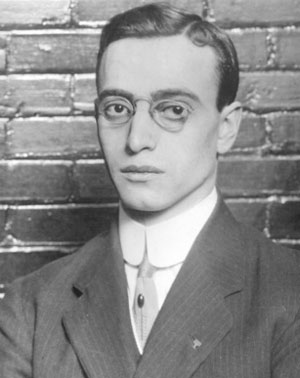 [center][large]Leo Frank Case
[center][large]Leo Frank Case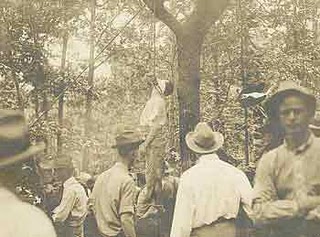 Rôle des médias
Rôle des médias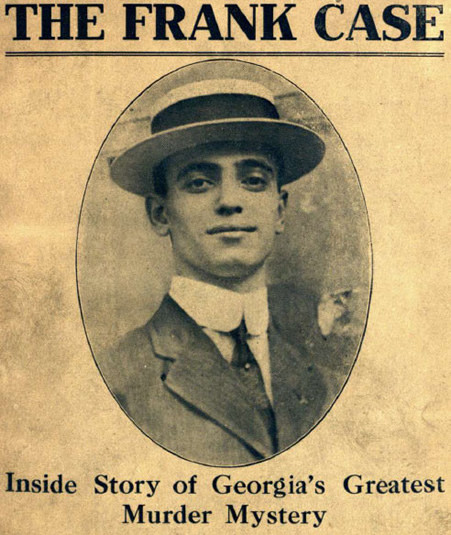
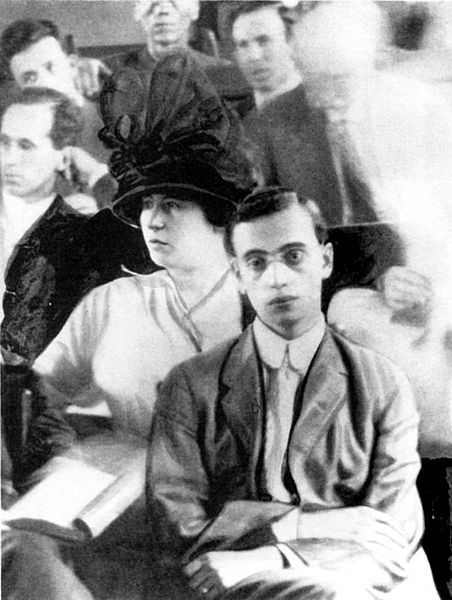
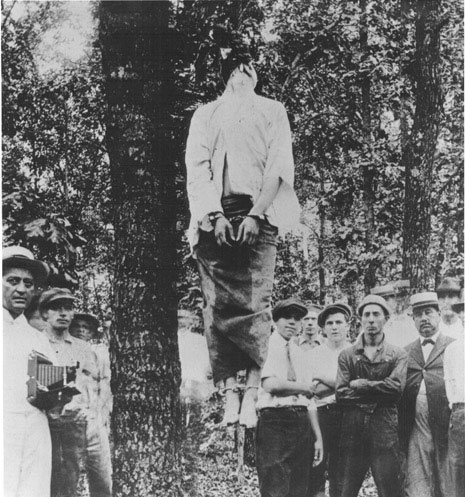
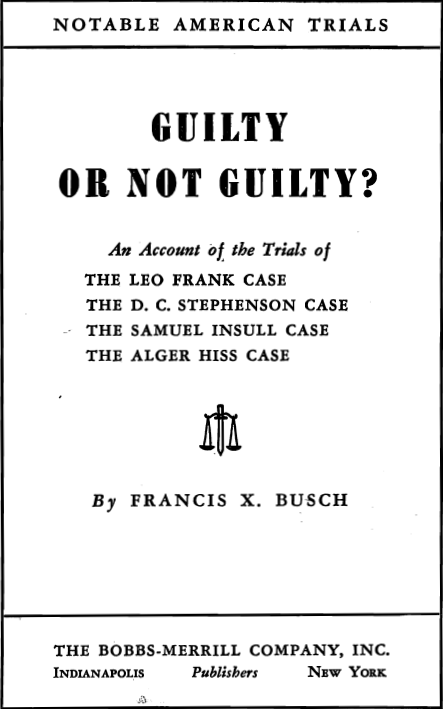
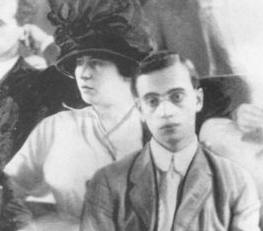 Many Jews argued that racist Gentiles in the deep South were simply persecuting Frank because he was Jewish, and wanted to let the real criminal, a Black man, go free - because everyone knows how much Whites in the deep South prefer Black rapist child-murderers to White Jews (written with obvious sarcasm) - or so some Jews with their deficient arguments claimed.
Many Jews argued that racist Gentiles in the deep South were simply persecuting Frank because he was Jewish, and wanted to let the real criminal, a Black man, go free - because everyone knows how much Whites in the deep South prefer Black rapist child-murderers to White Jews (written with obvious sarcasm) - or so some Jews with their deficient arguments claimed.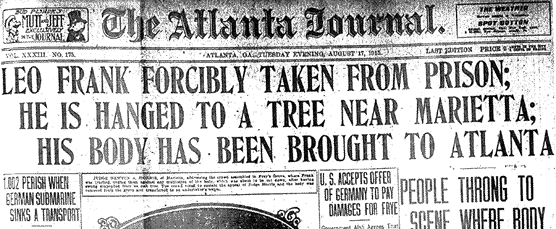
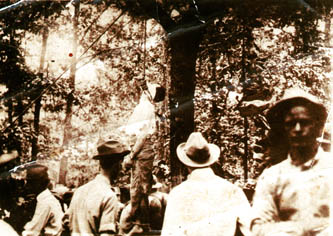
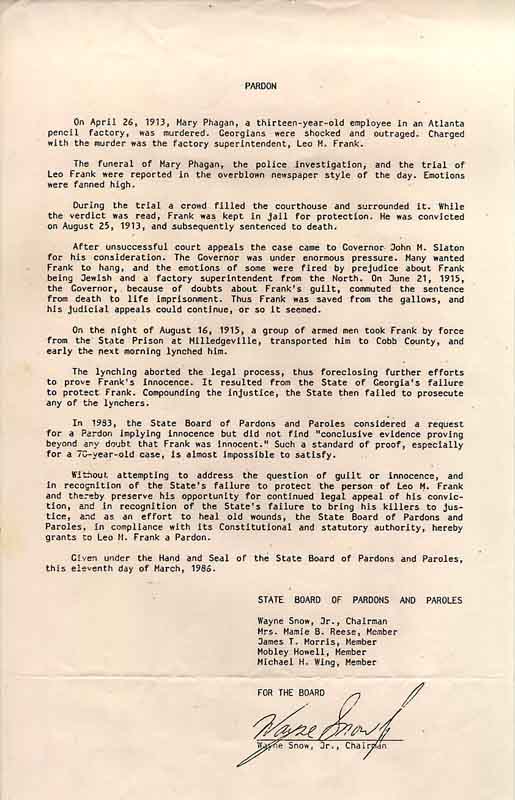
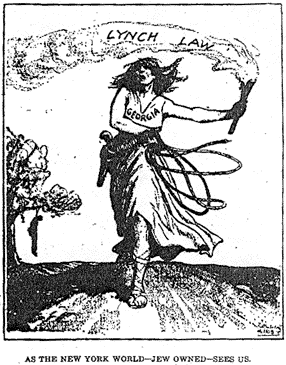
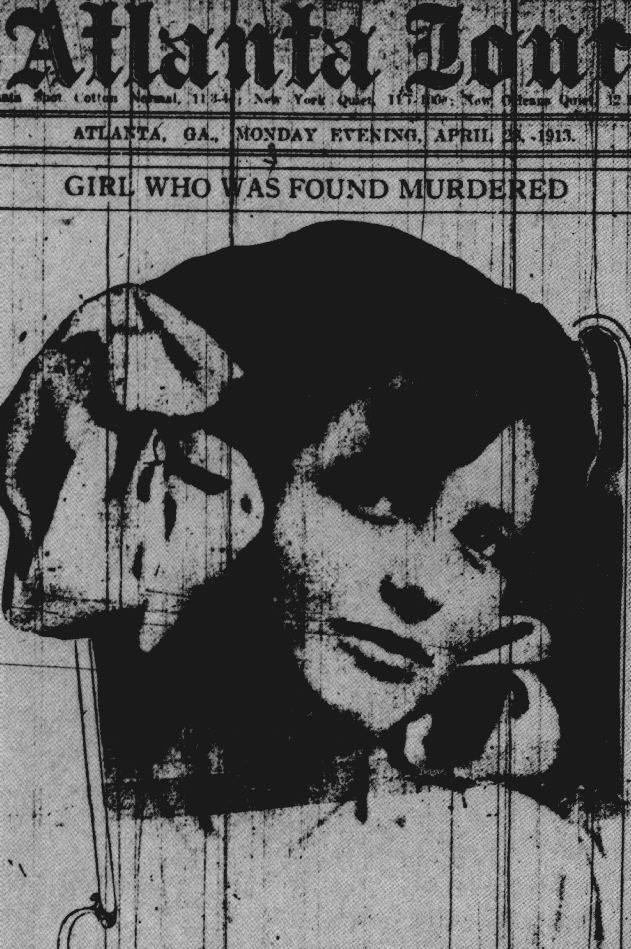
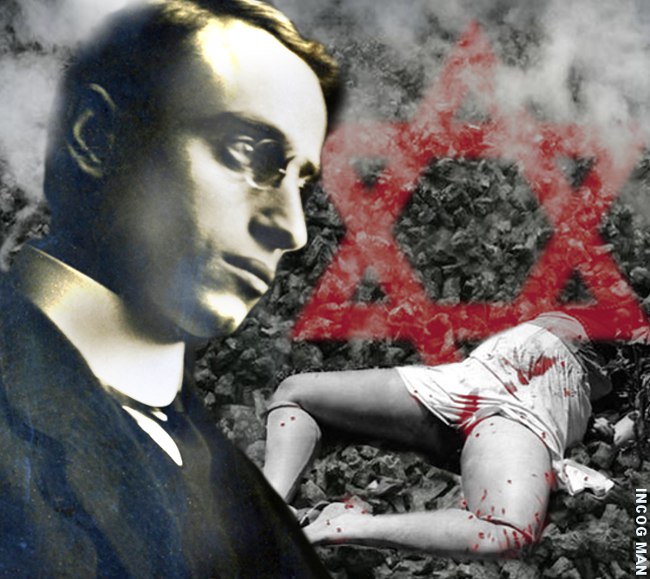
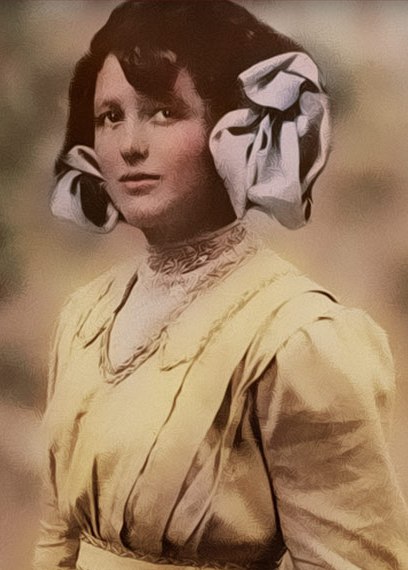 [justify]On Confederate Memorial Day, Saturday, April 26, 1913, young Mary Phagan entered the office anteroom of her boss, National Pencil Company superintendent Leo Frank, just minutes after high noon to pick up her pay envelope for her work the week before.
[justify]On Confederate Memorial Day, Saturday, April 26, 1913, young Mary Phagan entered the office anteroom of her boss, National Pencil Company superintendent Leo Frank, just minutes after high noon to pick up her pay envelope for her work the week before.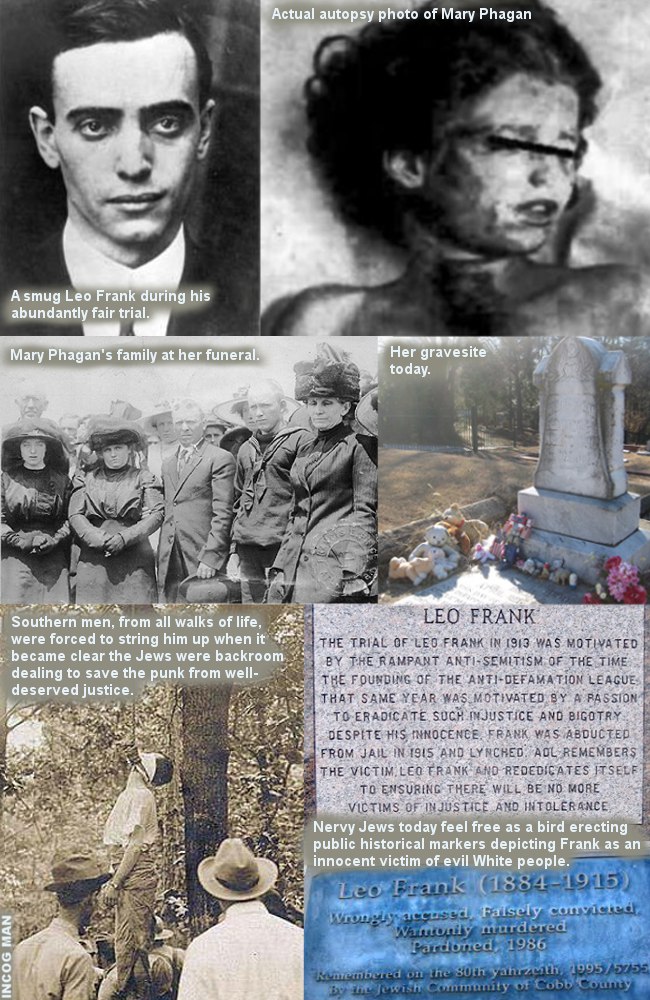
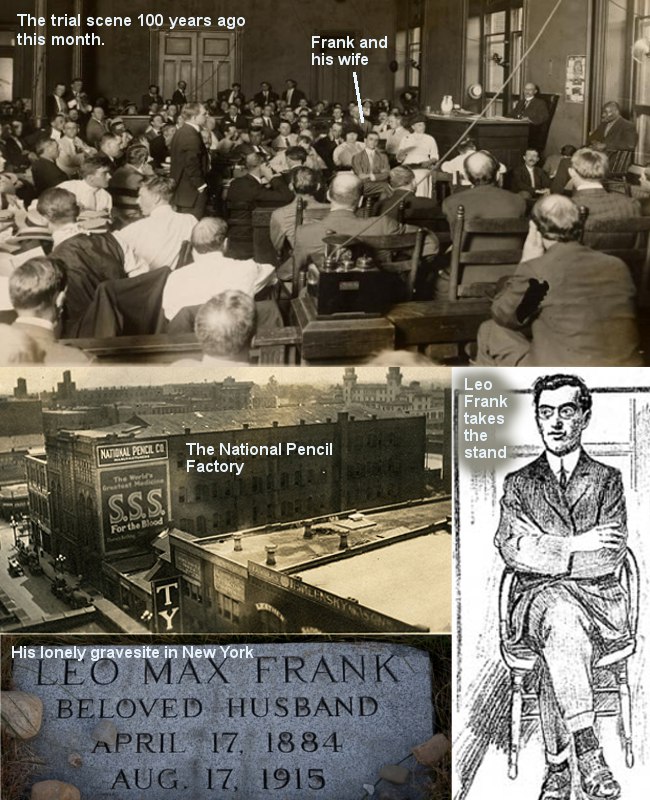

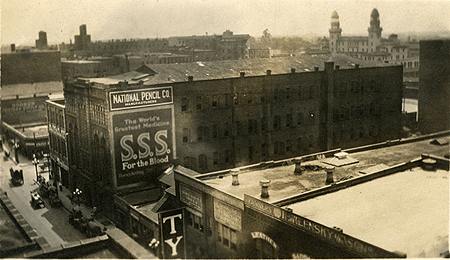
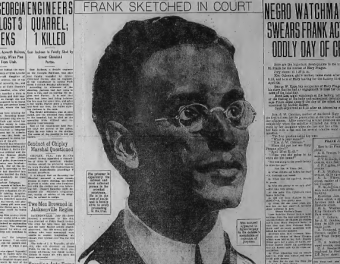 [justify]Take a journey through time with the American Mercury, and experience the trial of Leo Frank (pictured, in courtroom sketch) for the murder of Mary Phagan just as it happened as revealed in contemporary accounts. The Mercury will be covering this historic trial in capsule form from now until August 26, the 100th anniversary of the rendering of the verdict.
[justify]Take a journey through time with the American Mercury, and experience the trial of Leo Frank (pictured, in courtroom sketch) for the murder of Mary Phagan just as it happened as revealed in contemporary accounts. The Mercury will be covering this historic trial in capsule form from now until August 26, the 100th anniversary of the rendering of the verdict.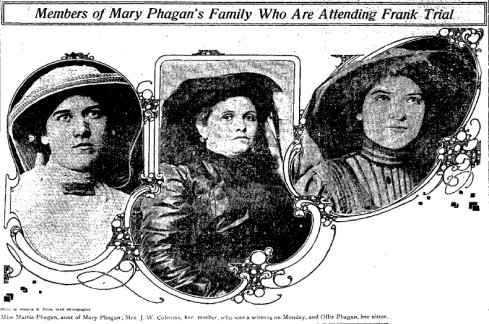
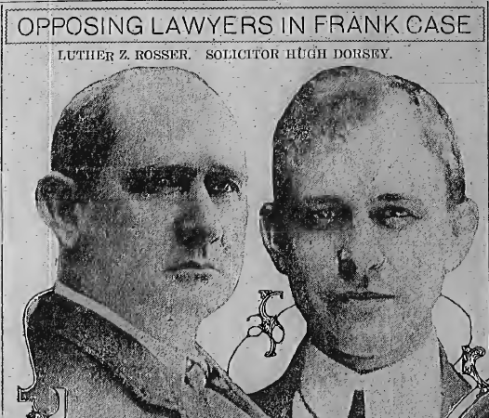
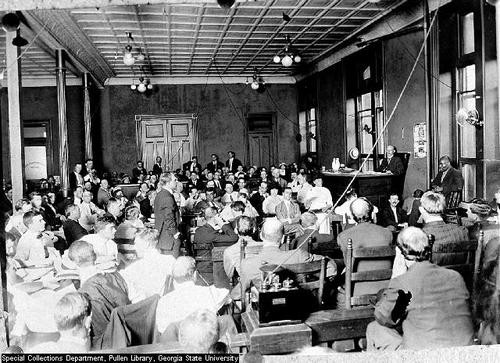
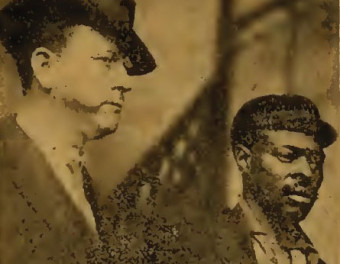 [justify]100 years ago today the trial of the 20th century ended its first week, shedding brilliant light on the greatest murder mystery of all time: the murder of Mary Phagan. And you are there.
[justify]100 years ago today the trial of the 20th century ended its first week, shedding brilliant light on the greatest murder mystery of all time: the murder of Mary Phagan. And you are there.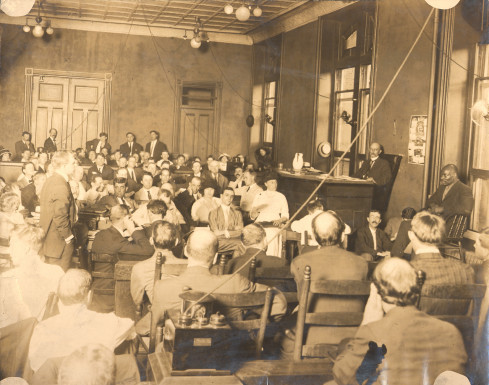
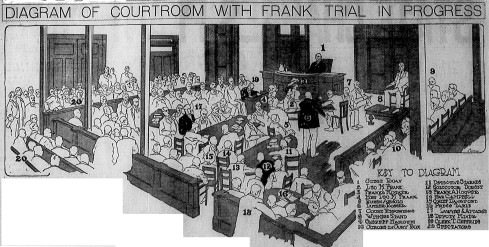
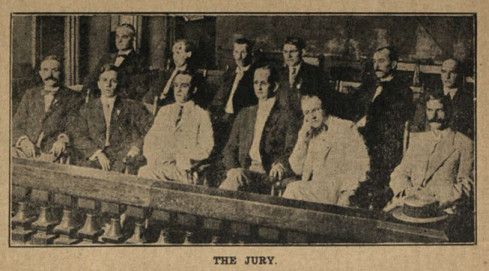
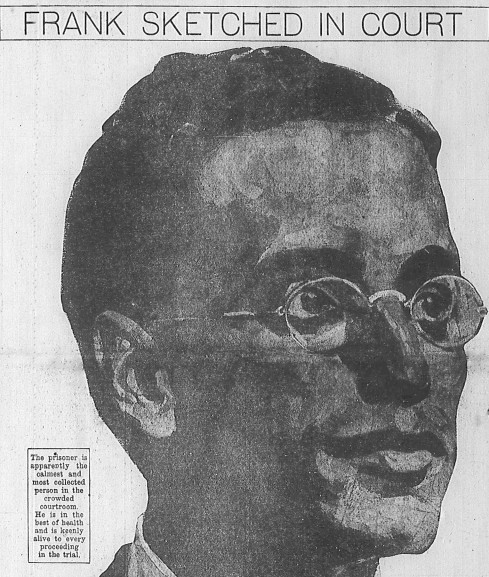
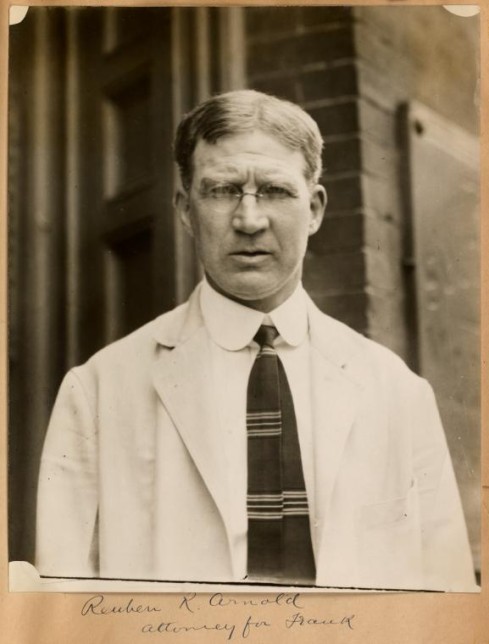
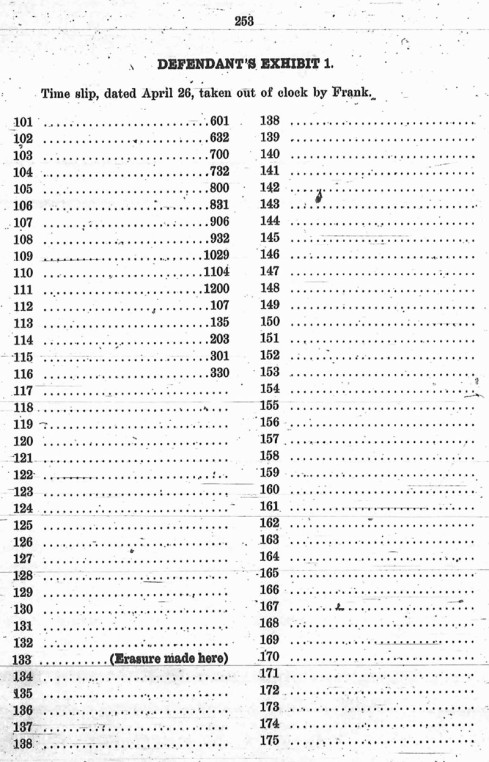
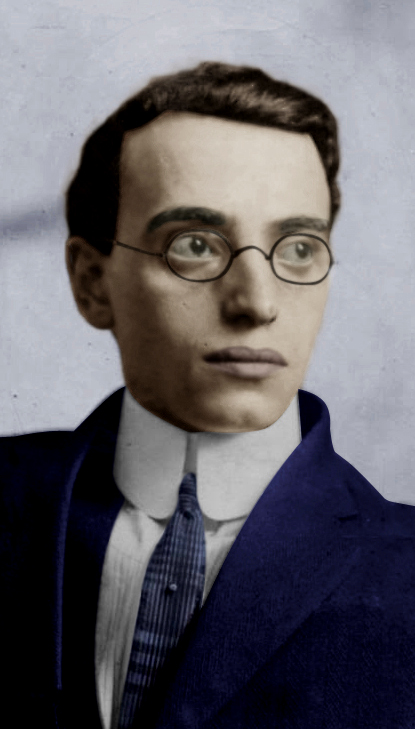
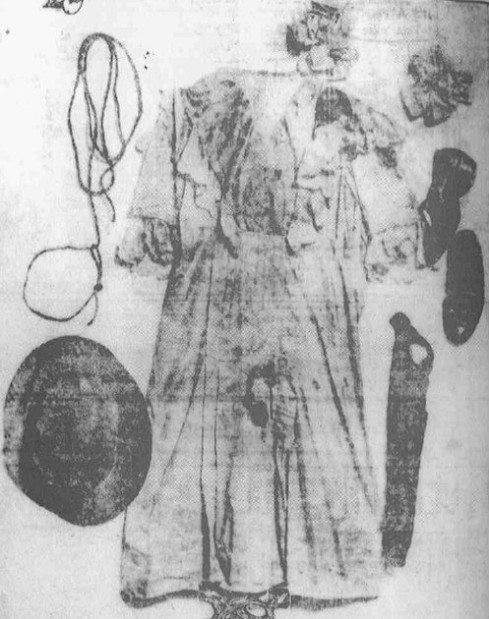
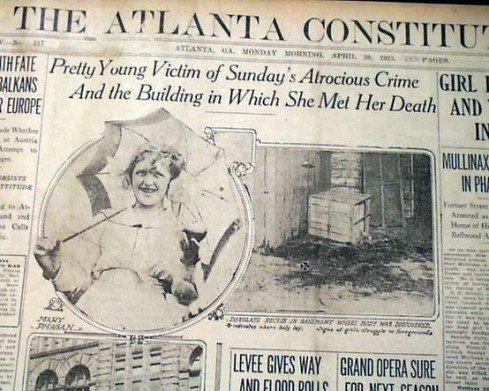
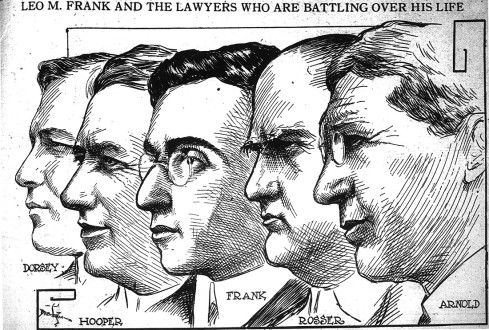
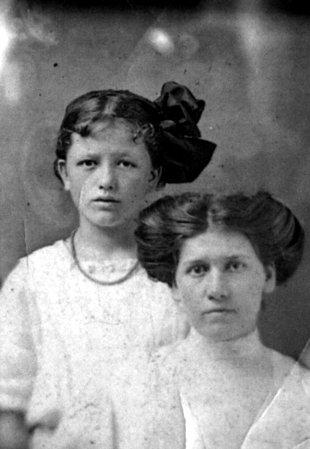
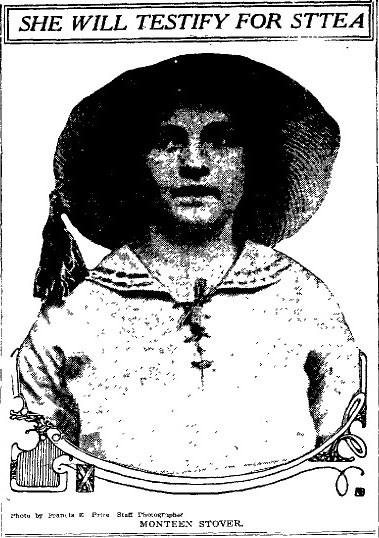

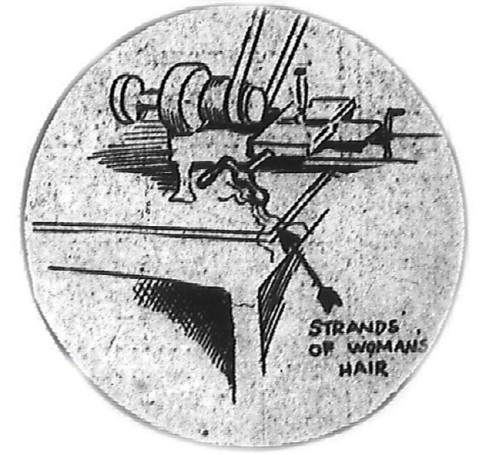
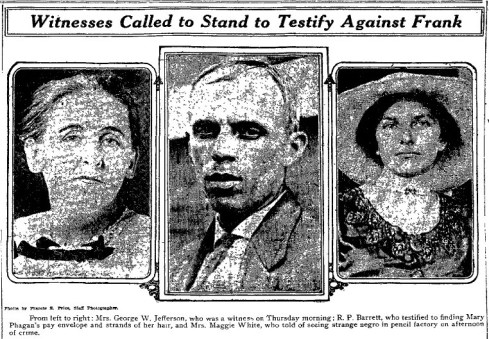
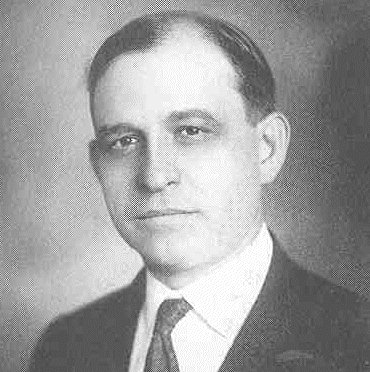

 [justify]The trial of Leo Frank for the murder of Mary Phagan ended its second week 100 years ago today. Join us as we delve into the original documents of the time and learn what the jurors learned.
[justify]The trial of Leo Frank for the murder of Mary Phagan ended its second week 100 years ago today. Join us as we delve into the original documents of the time and learn what the jurors learned.






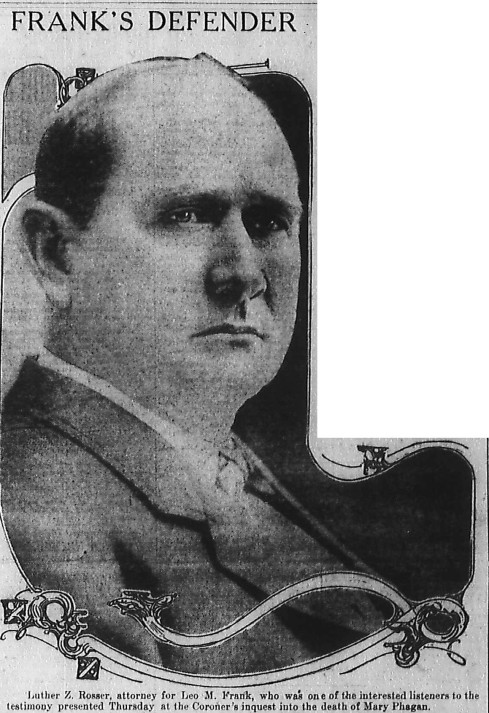
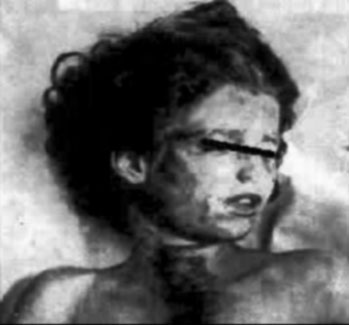
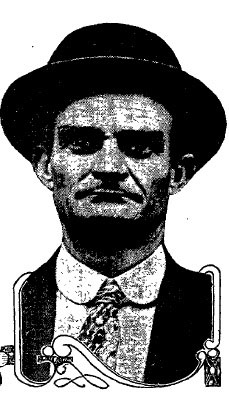
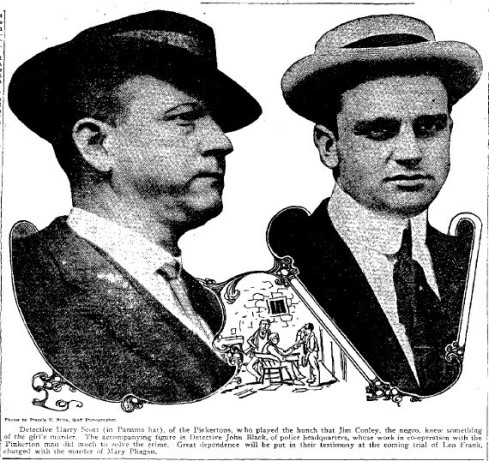
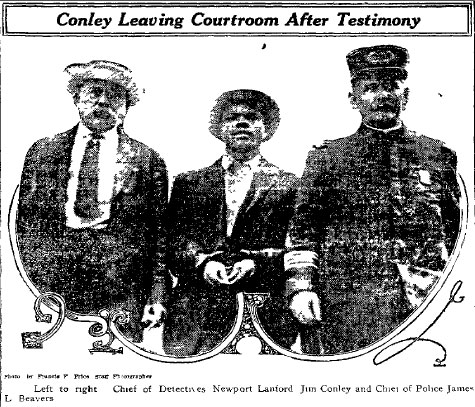
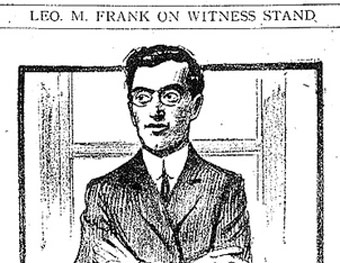 [justify]In a few days the Mercury will present Week Three of the trial of Leo Frank for the murder of Mary Phagan. Today, on the 100th anniversary of Leo Frank taking the stand in his own defense, we present a digest of opinion and contemporary sources on his statement.
[justify]In a few days the Mercury will present Week Three of the trial of Leo Frank for the murder of Mary Phagan. Today, on the 100th anniversary of Leo Frank taking the stand in his own defense, we present a digest of opinion and contemporary sources on his statement.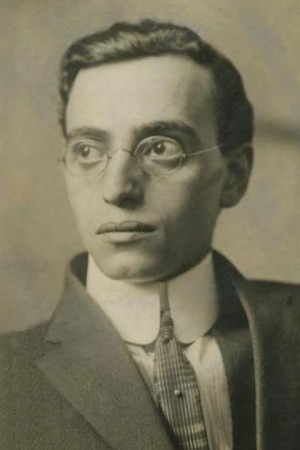
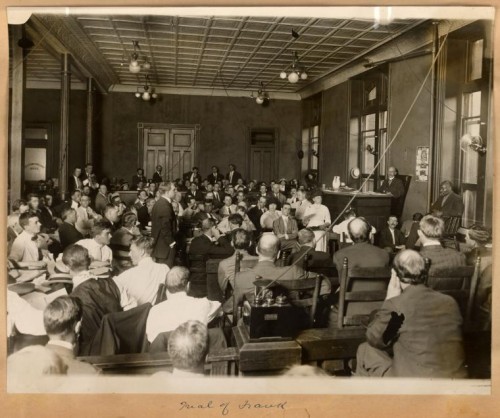
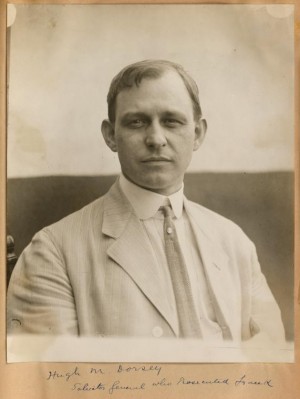
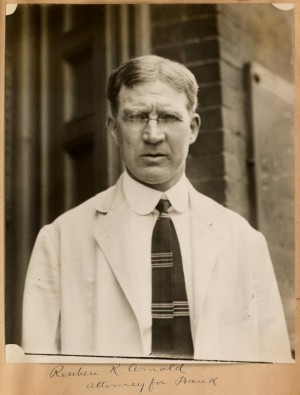
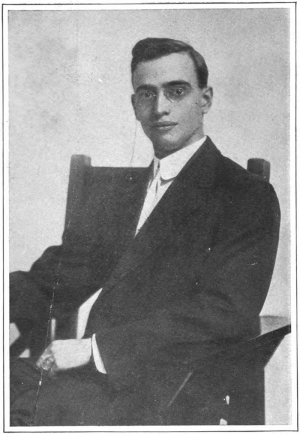

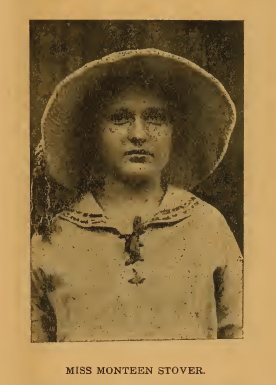
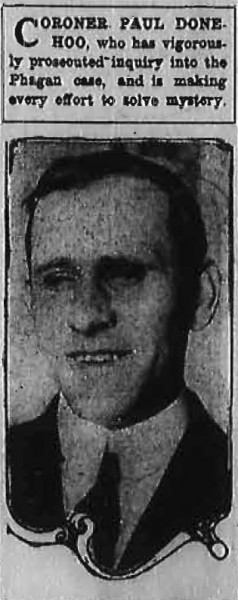
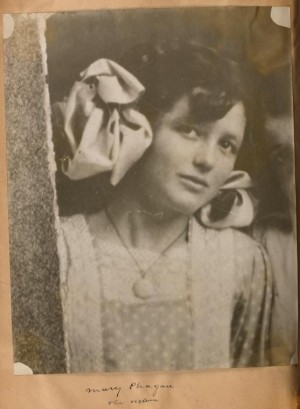
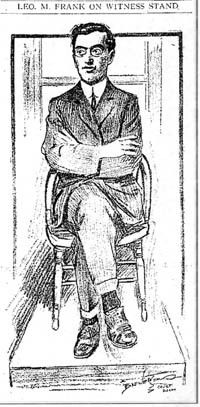
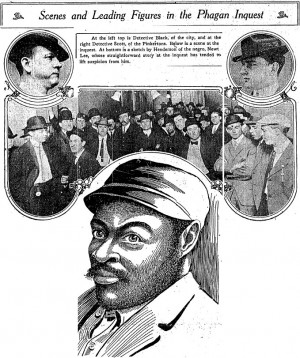
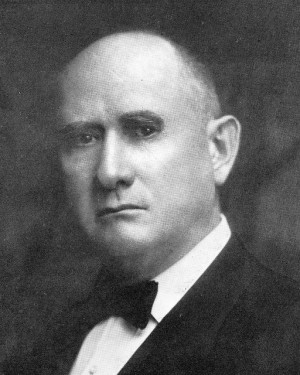
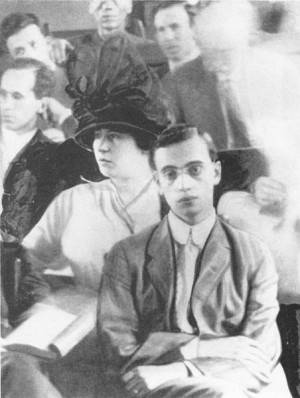
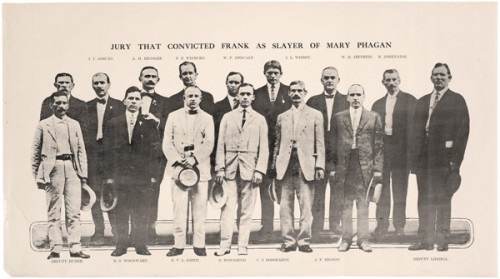
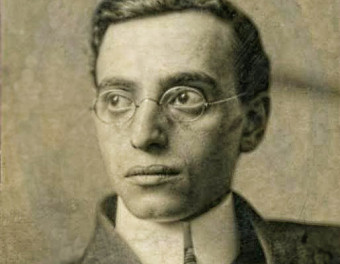
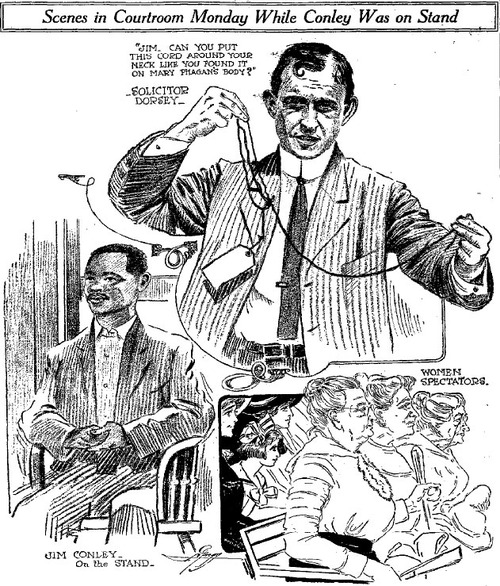

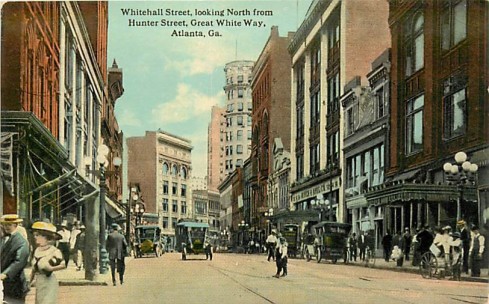
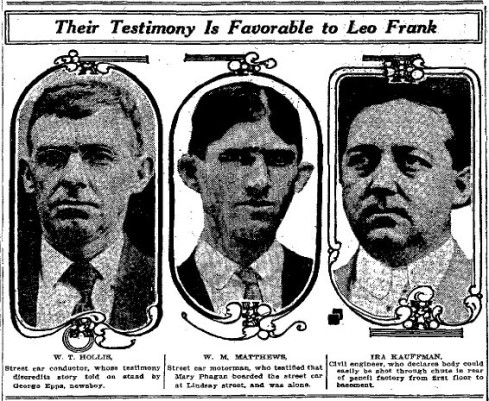
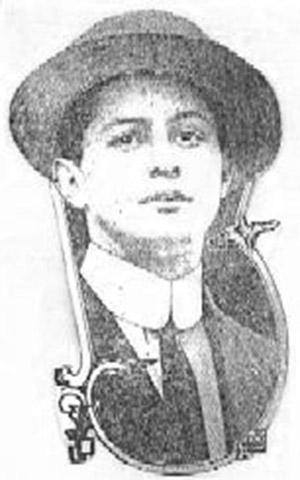
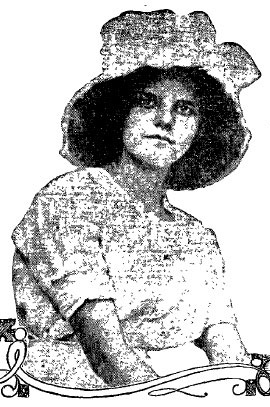
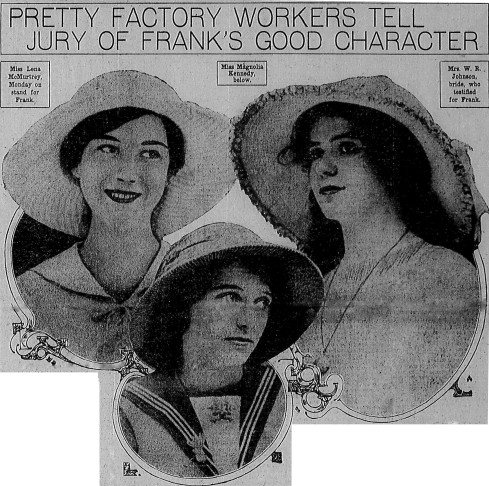
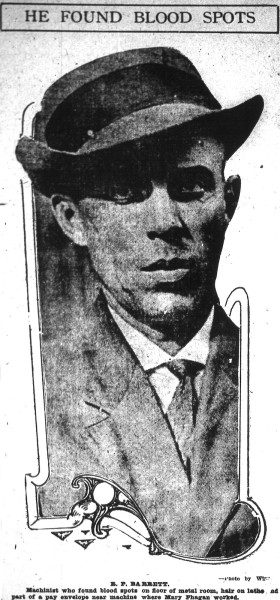
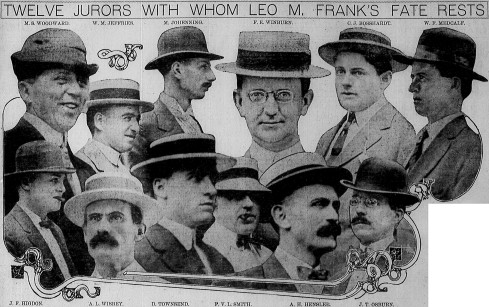
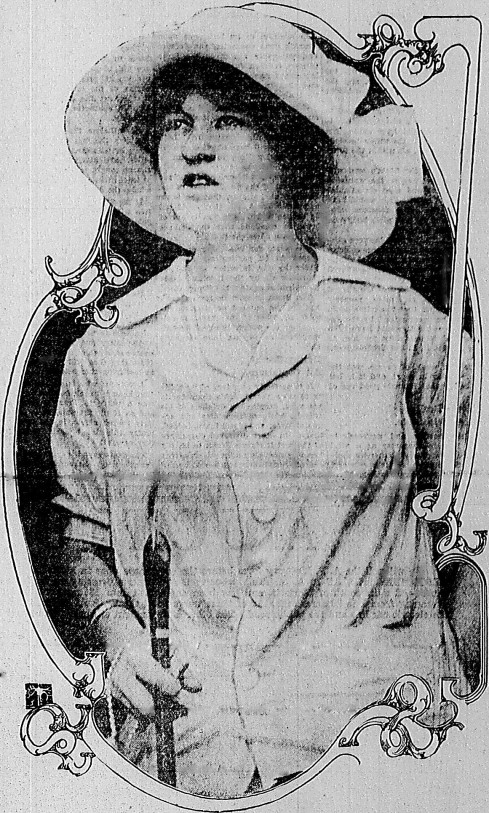
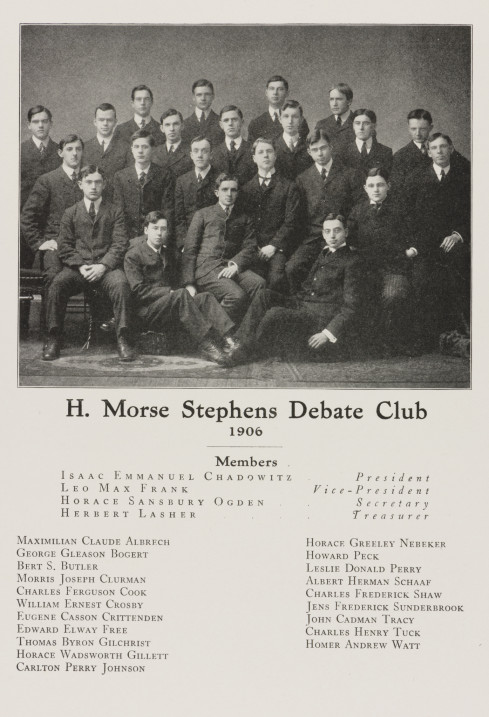
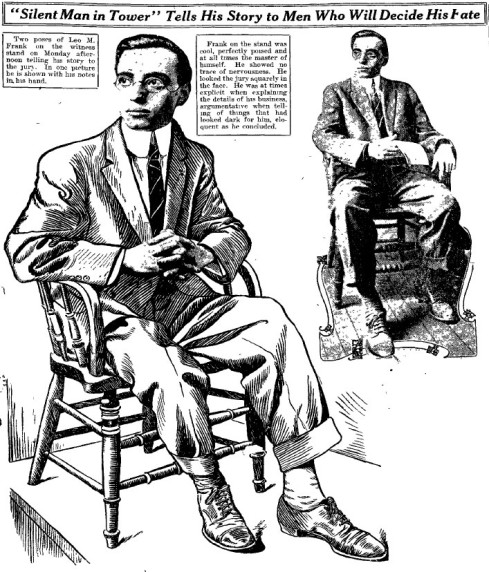
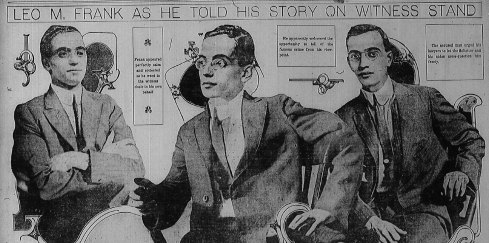
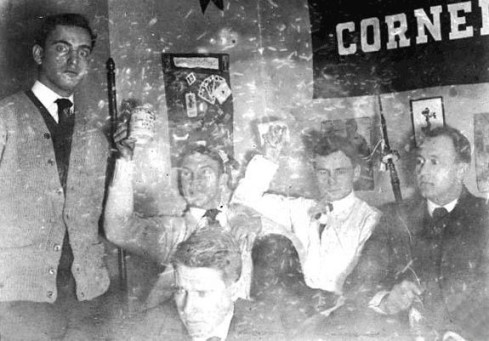
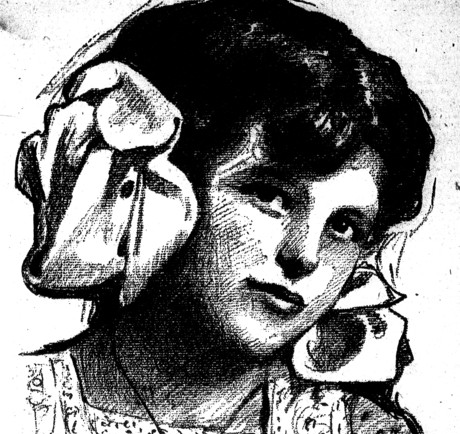
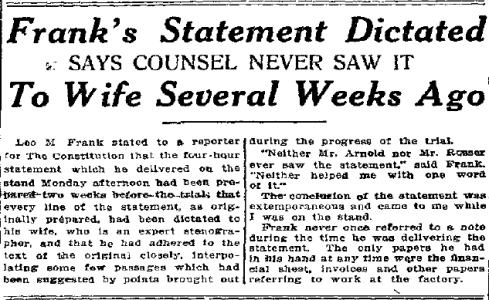
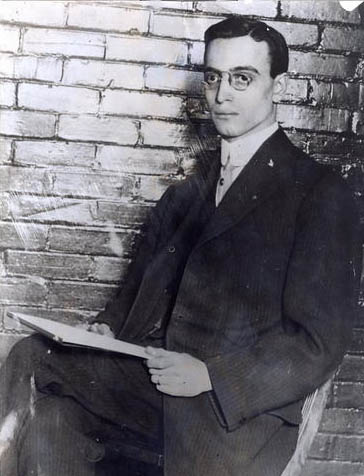
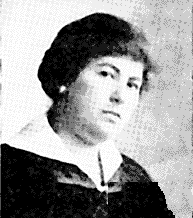
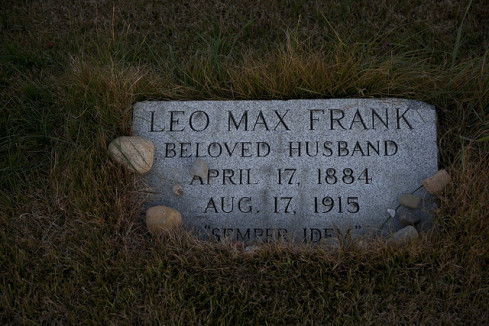
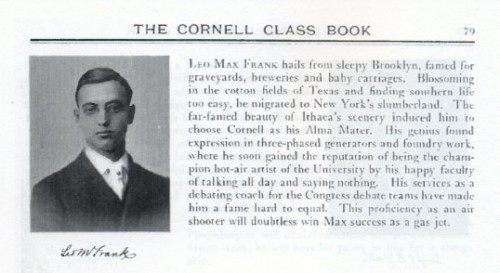
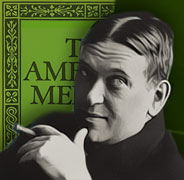
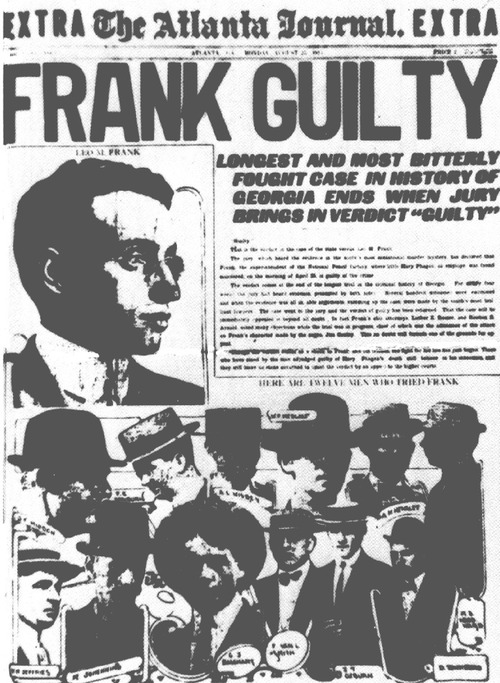
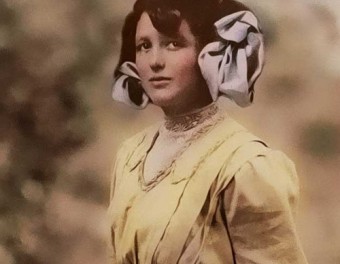 [justify]Proving That Anti-Semitism Had Nothing to Do With His Conviction ? and Proving That His Defenders Have Used Frauds and Hoaxes for 100 Years
[justify]Proving That Anti-Semitism Had Nothing to Do With His Conviction ? and Proving That His Defenders Have Used Frauds and Hoaxes for 100 Years